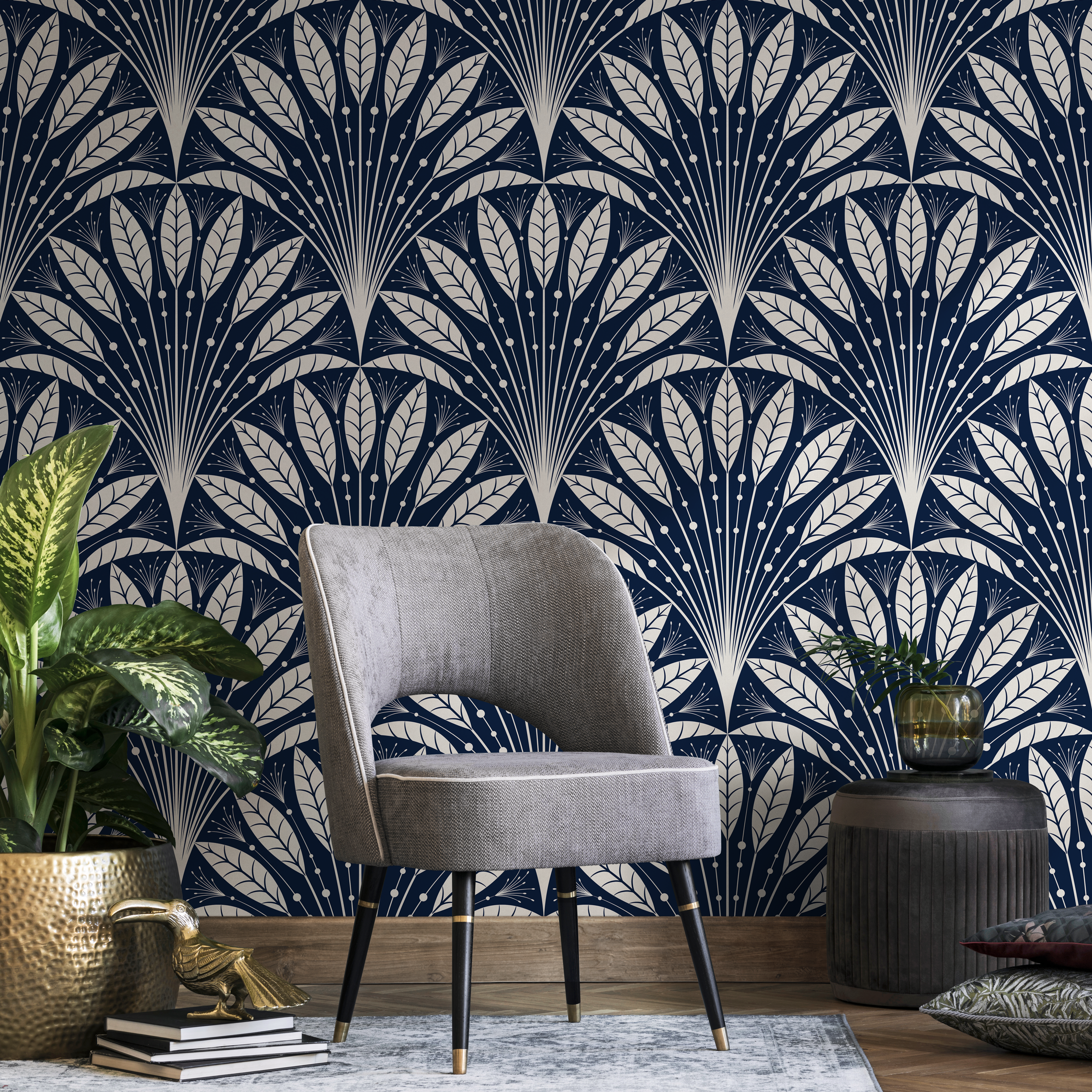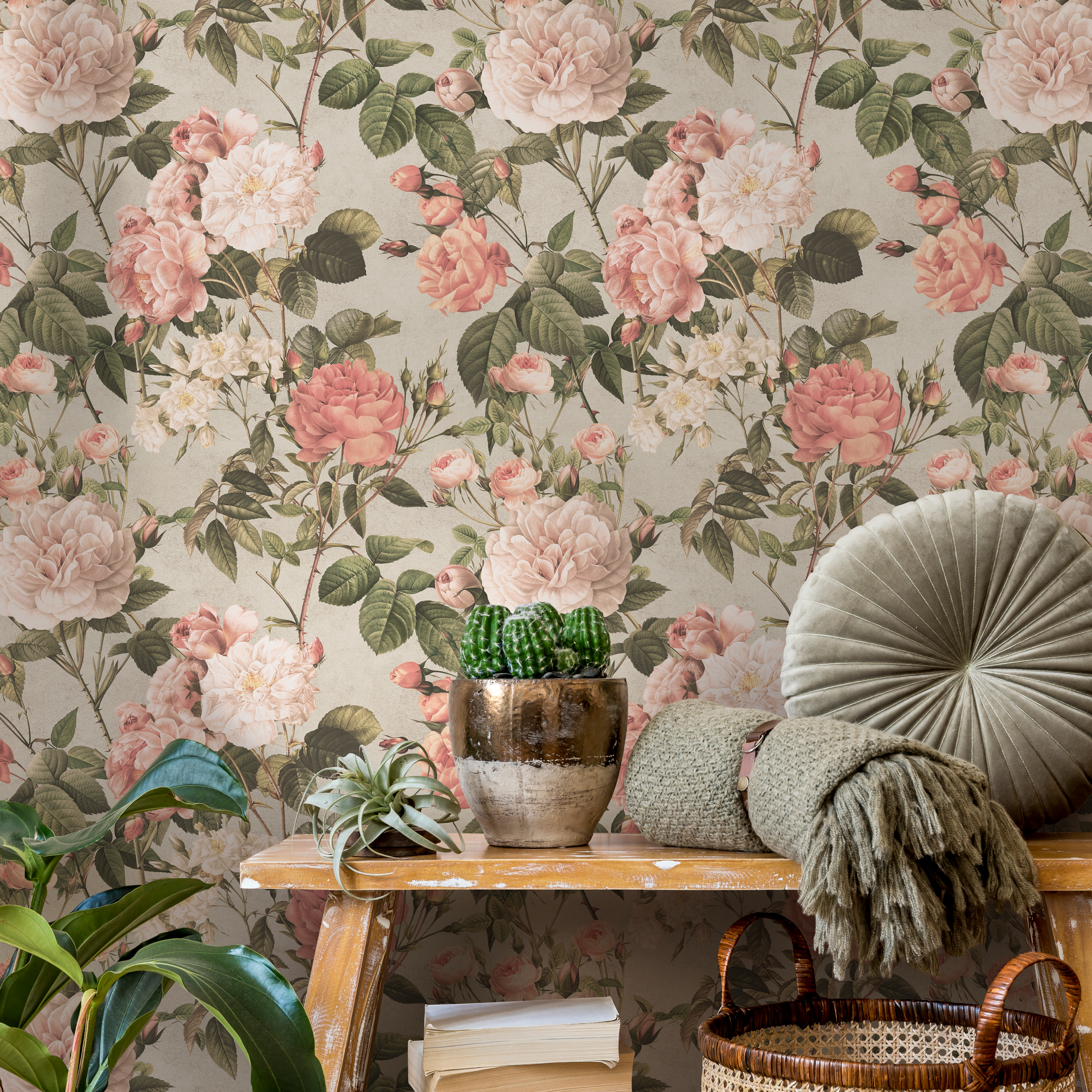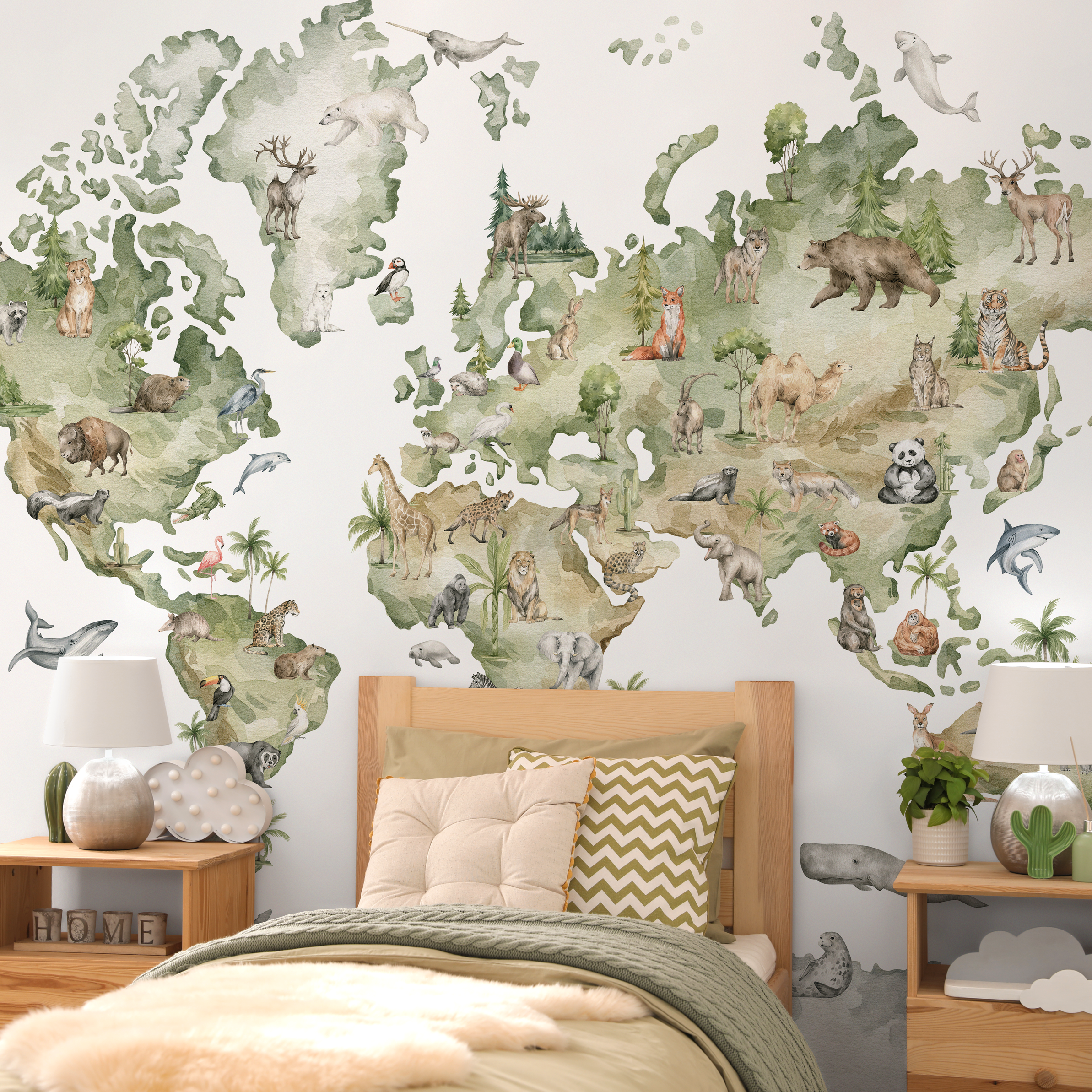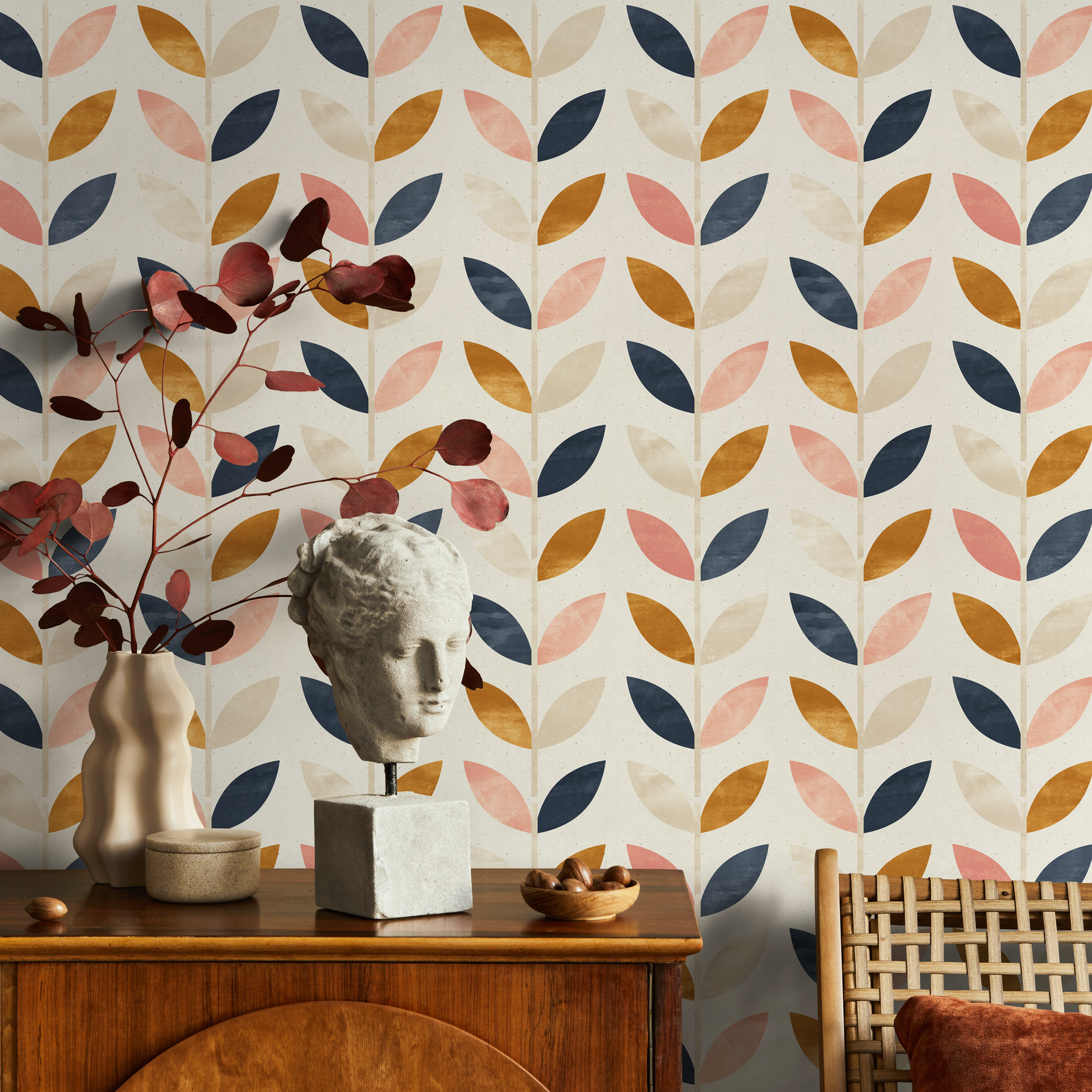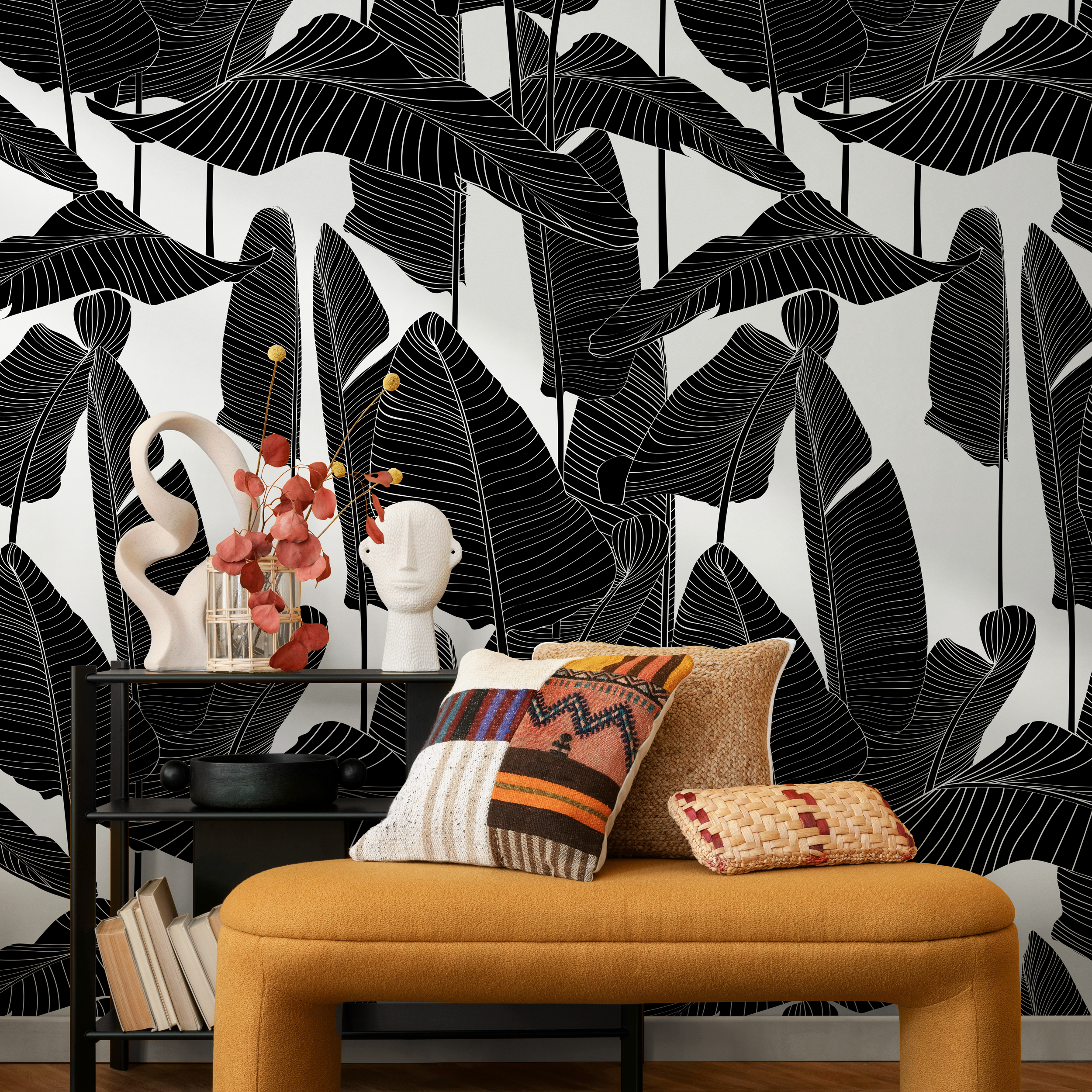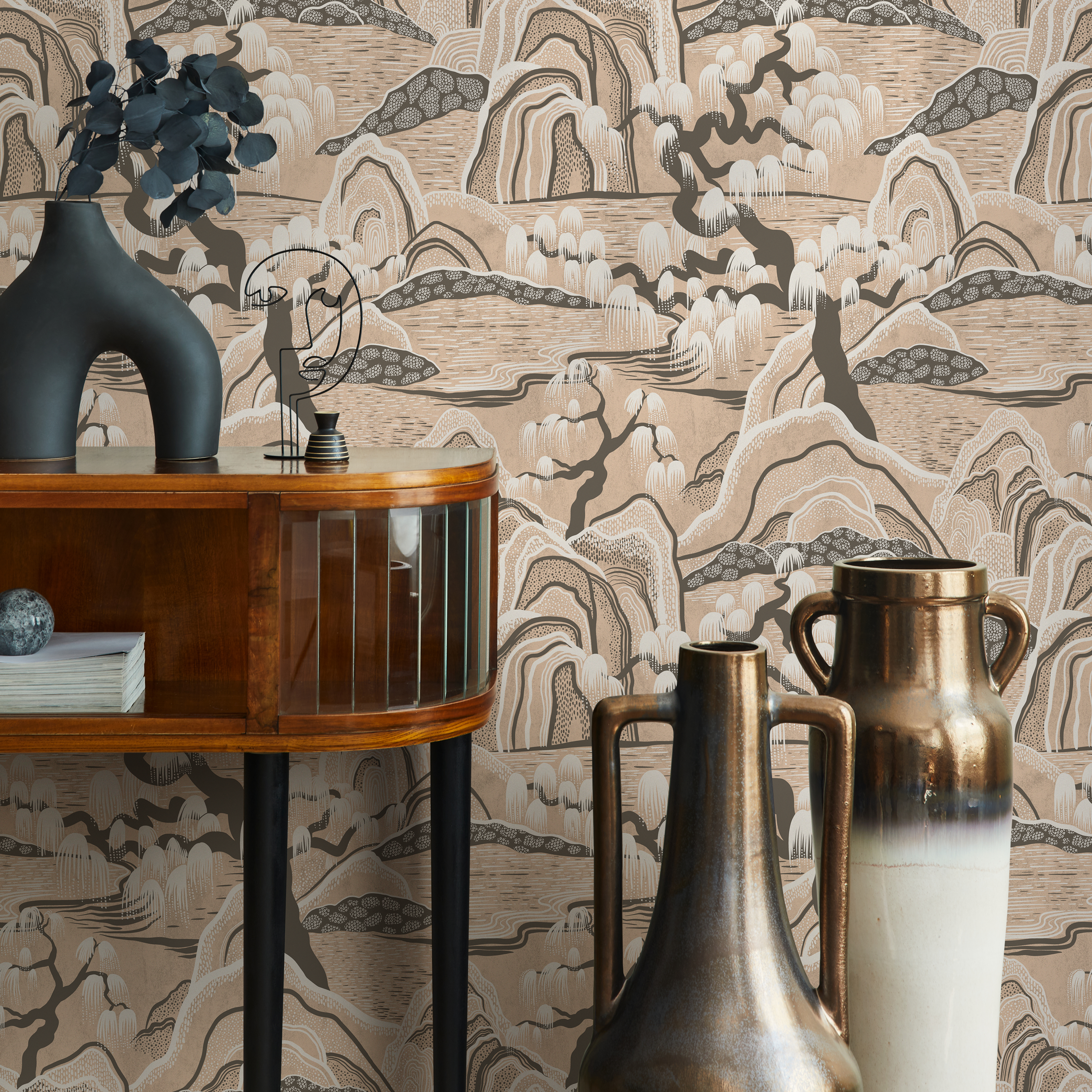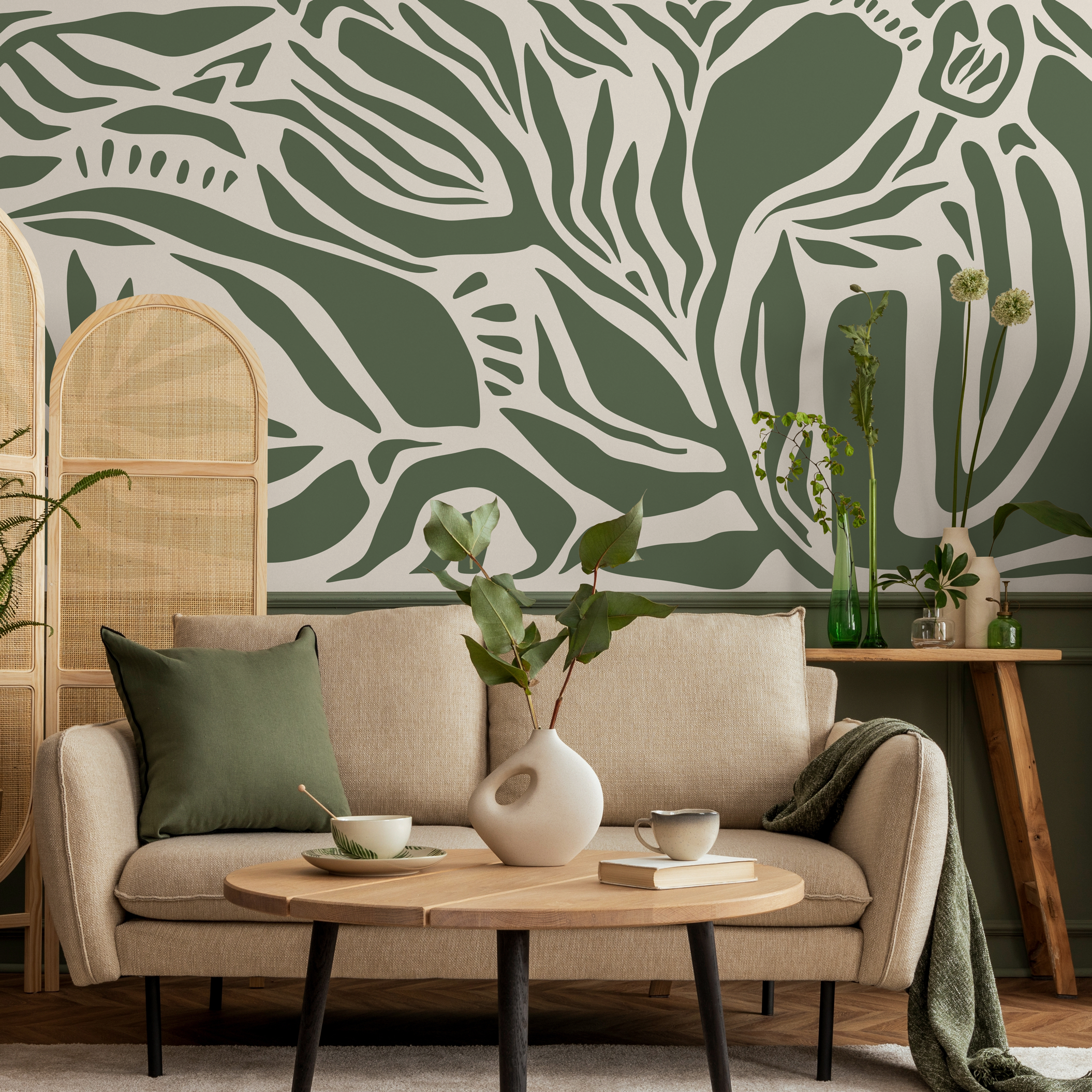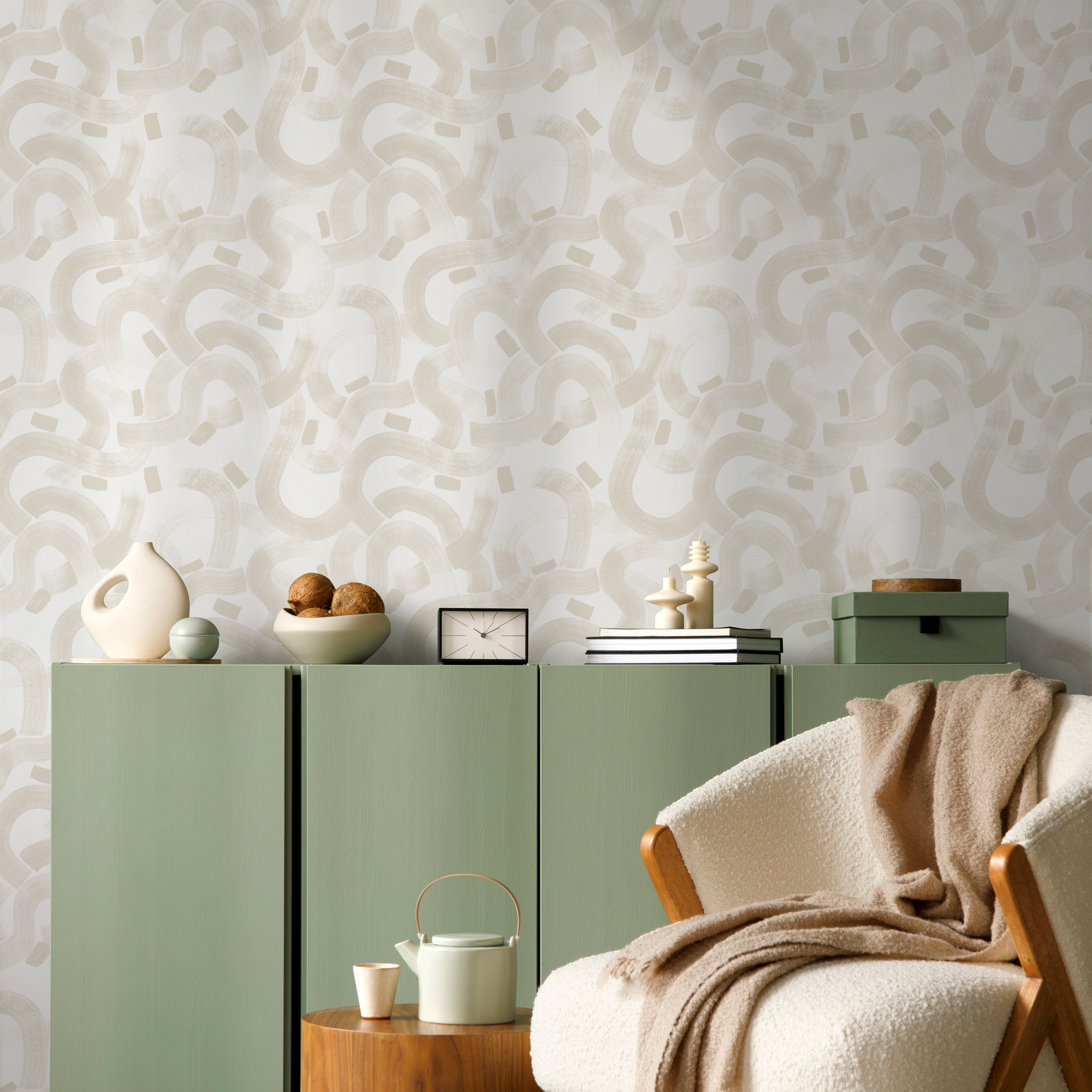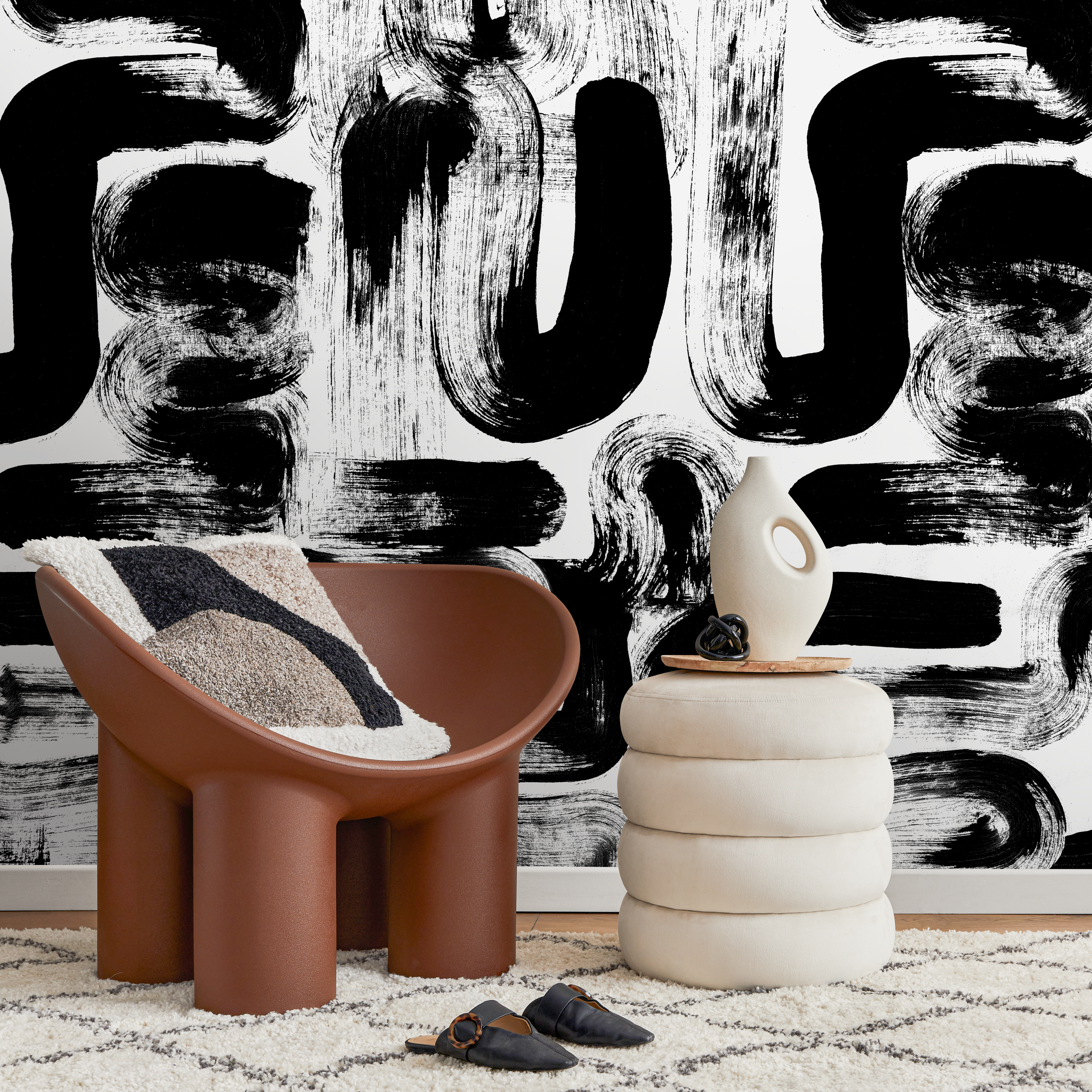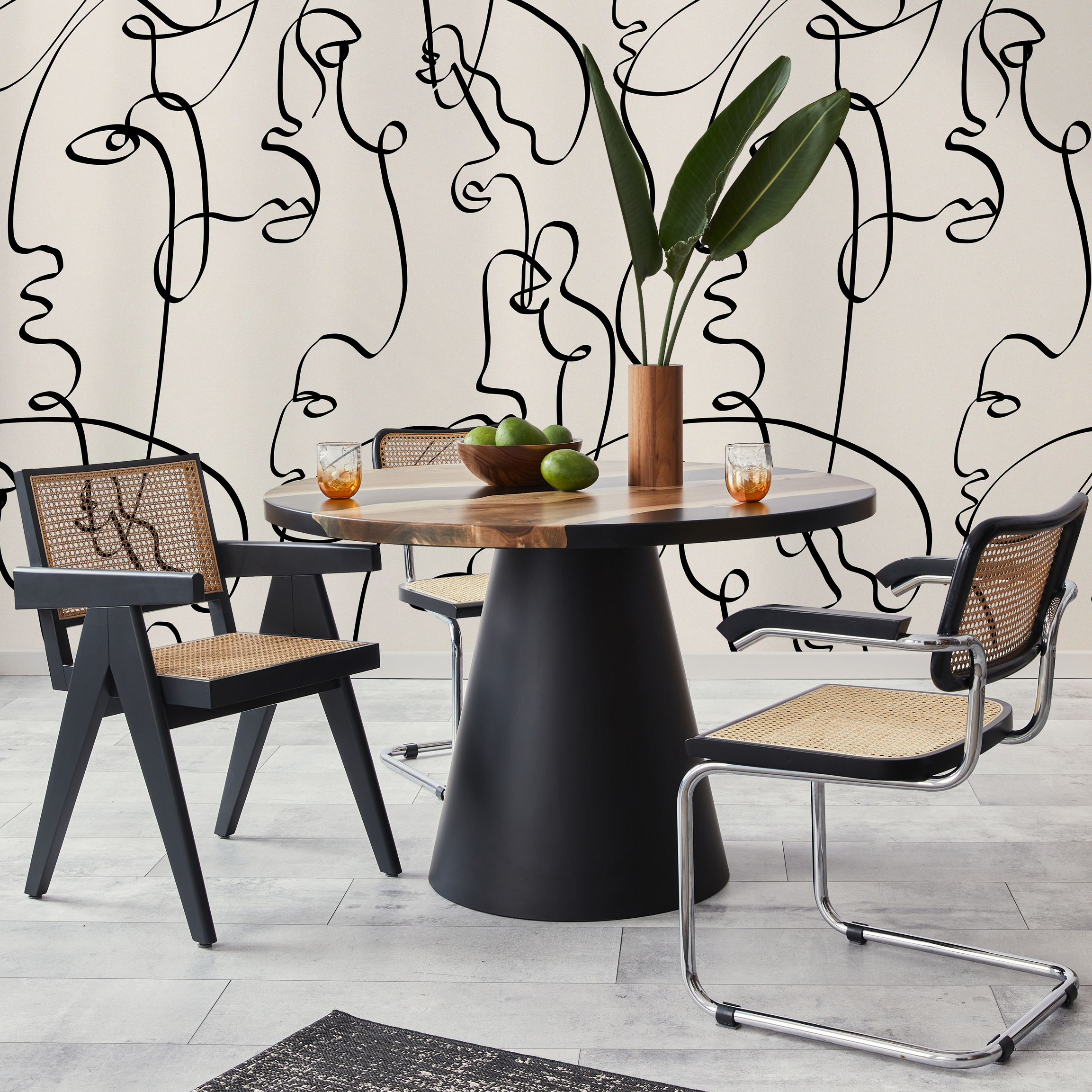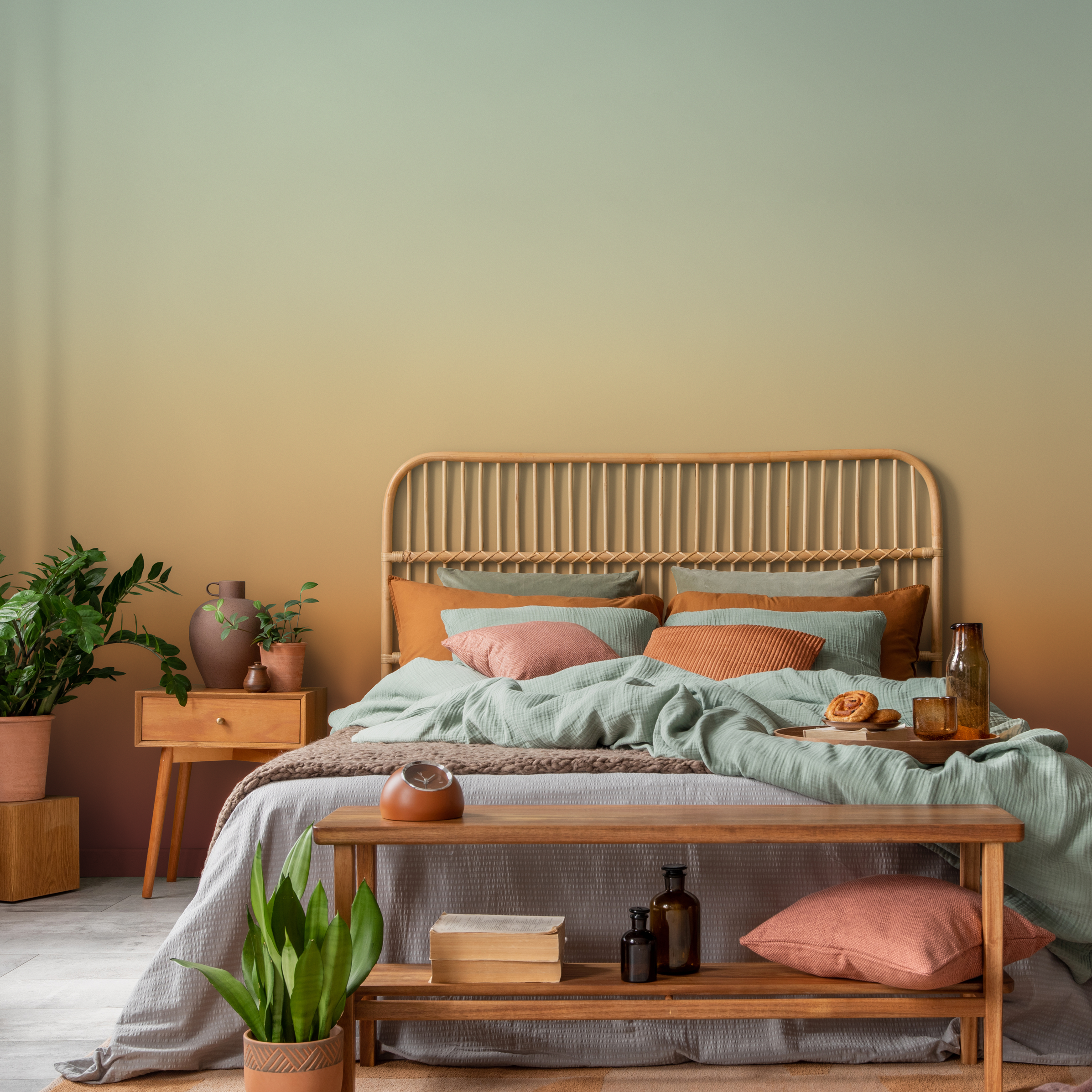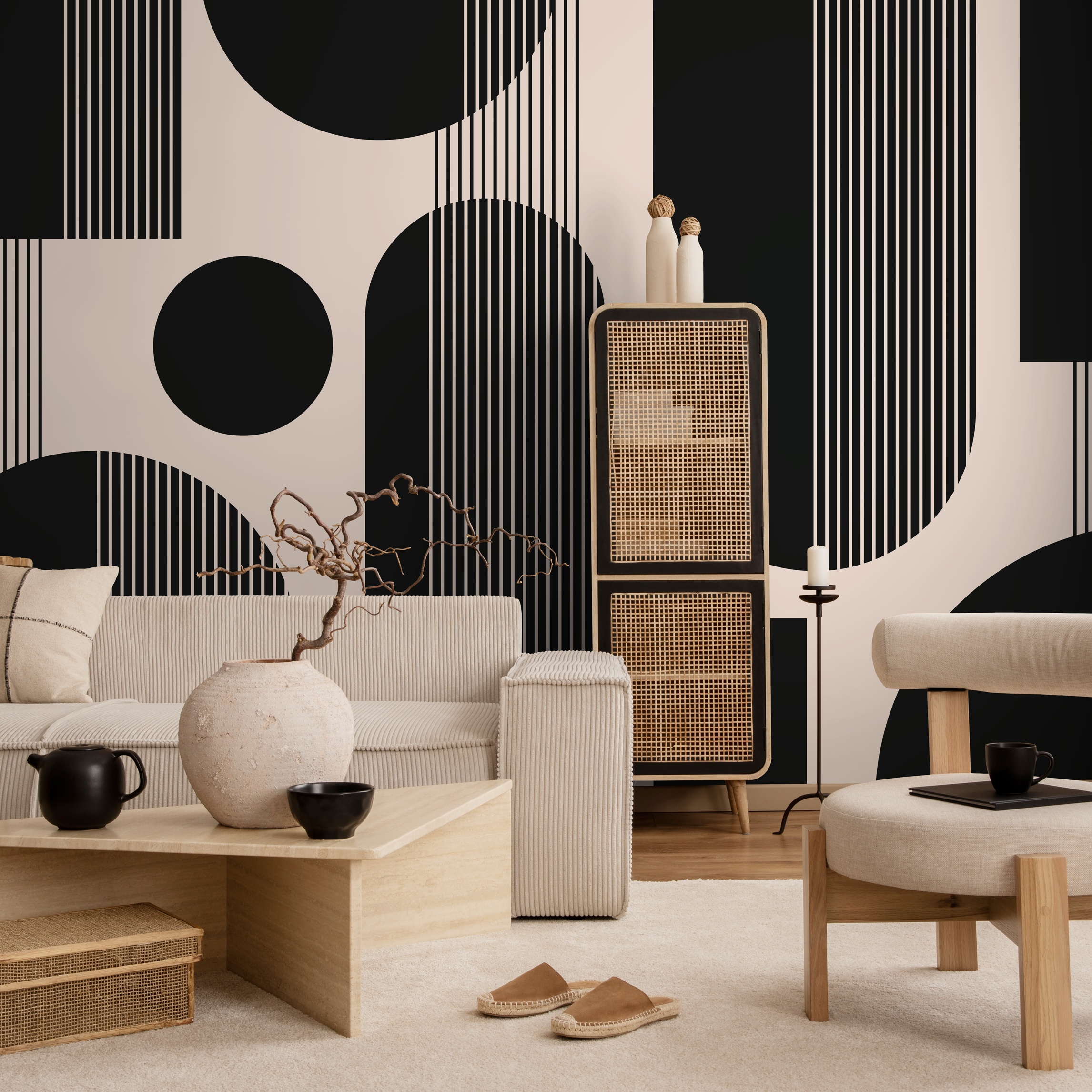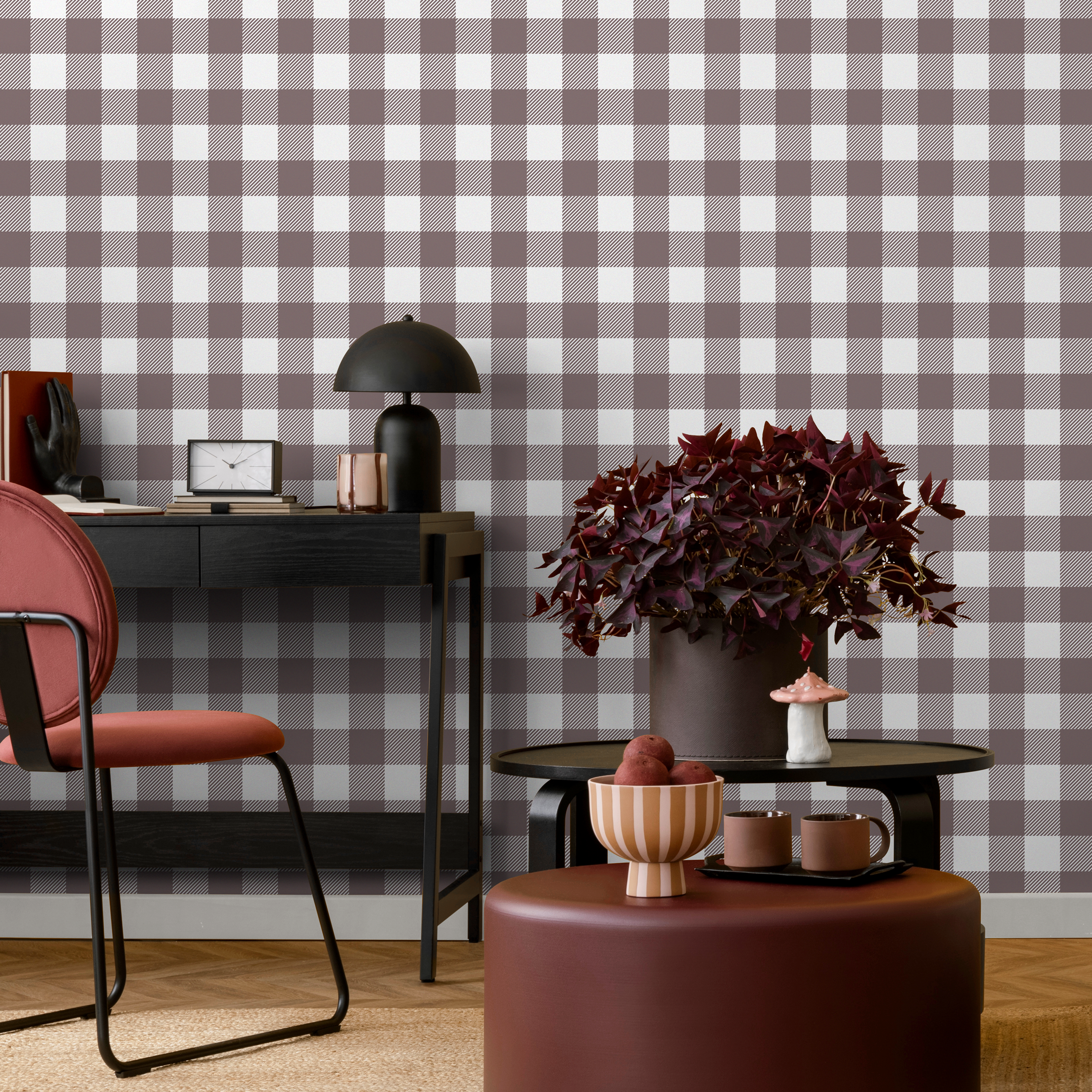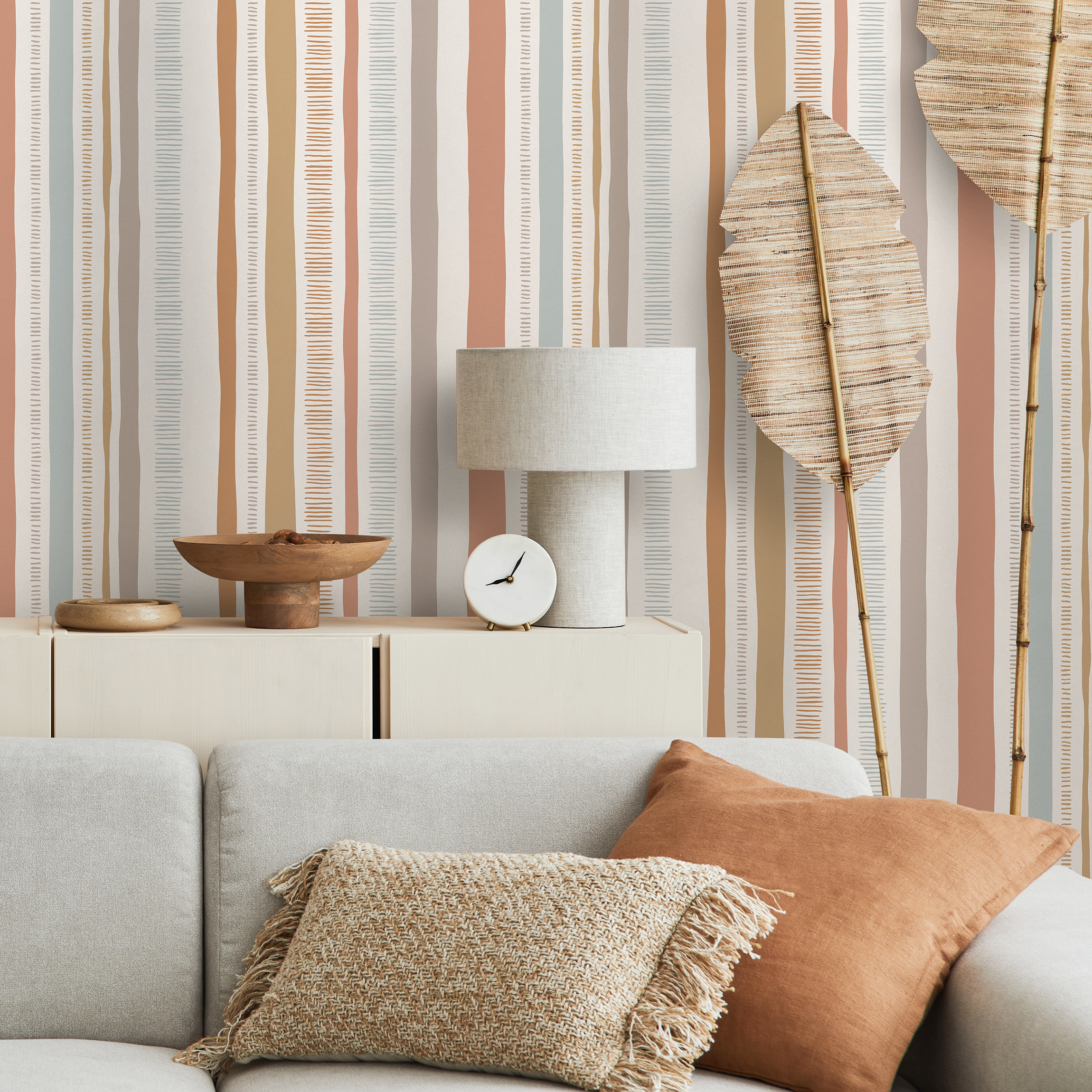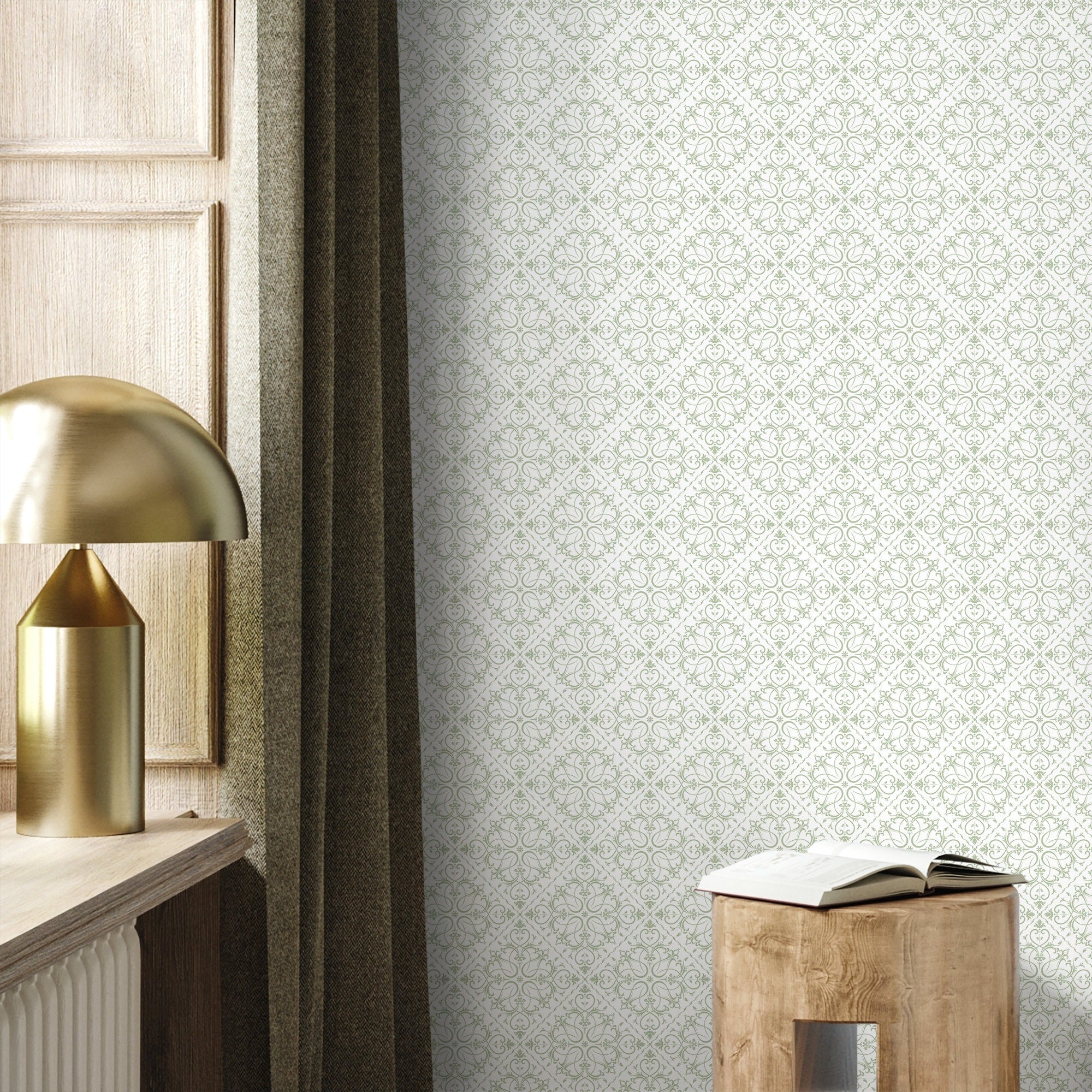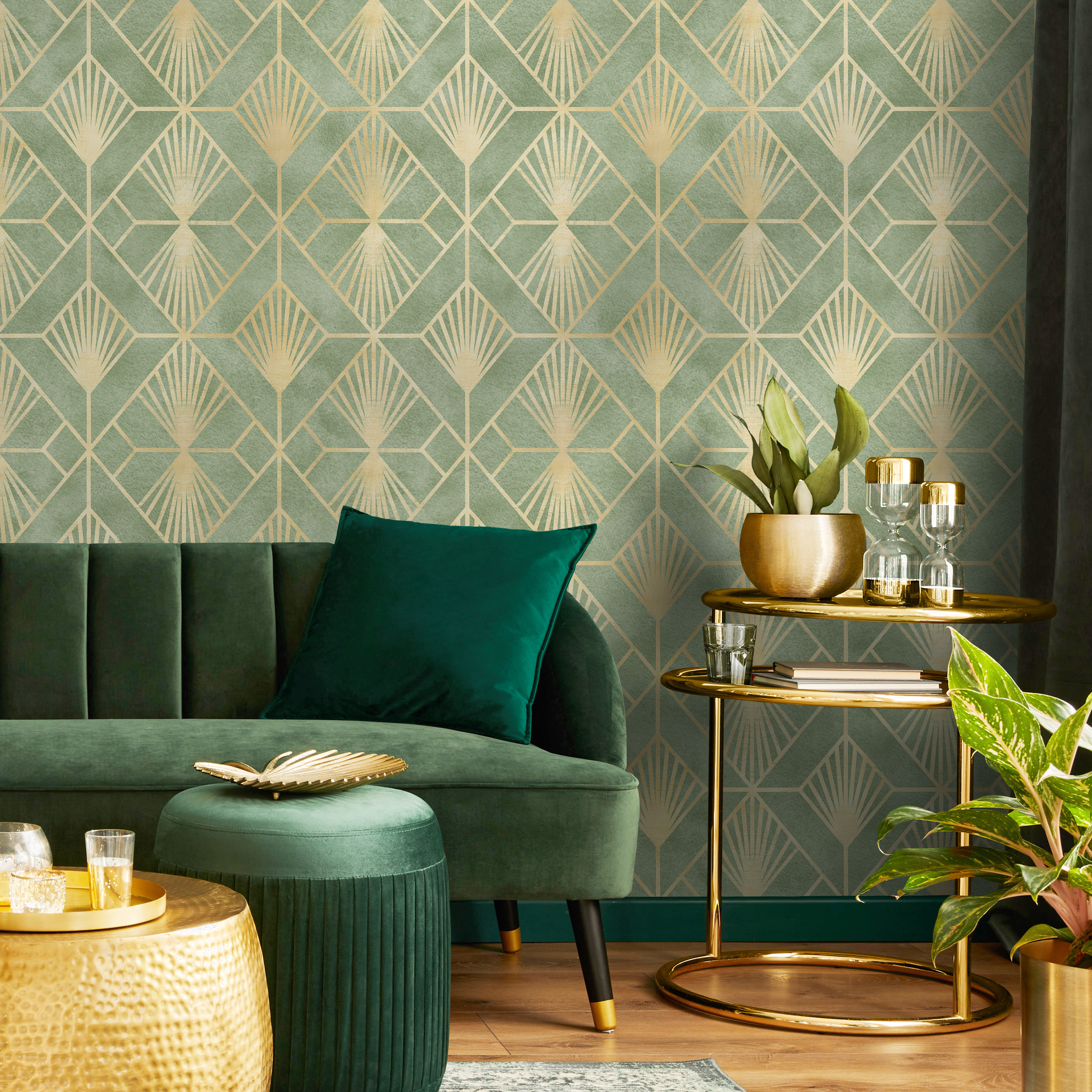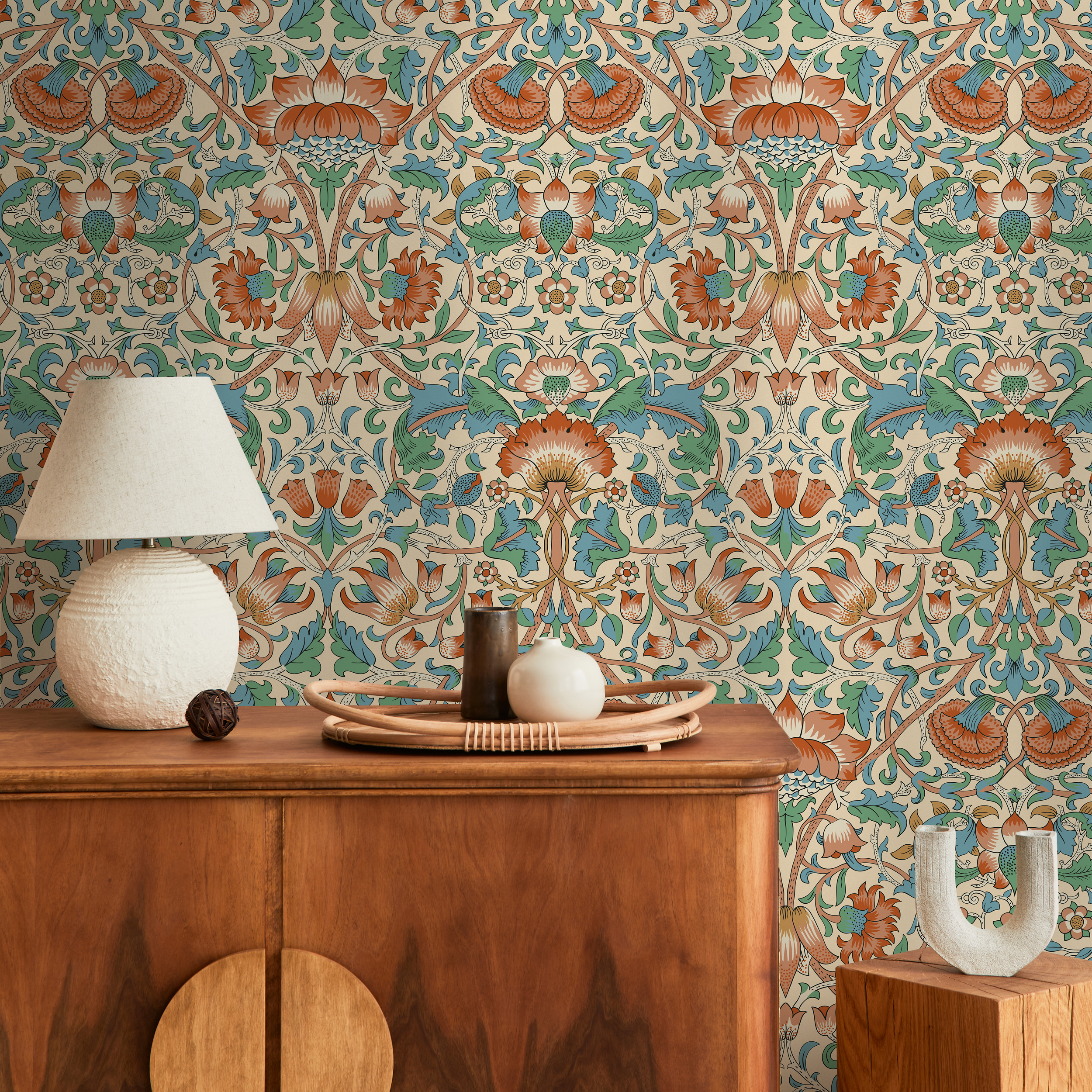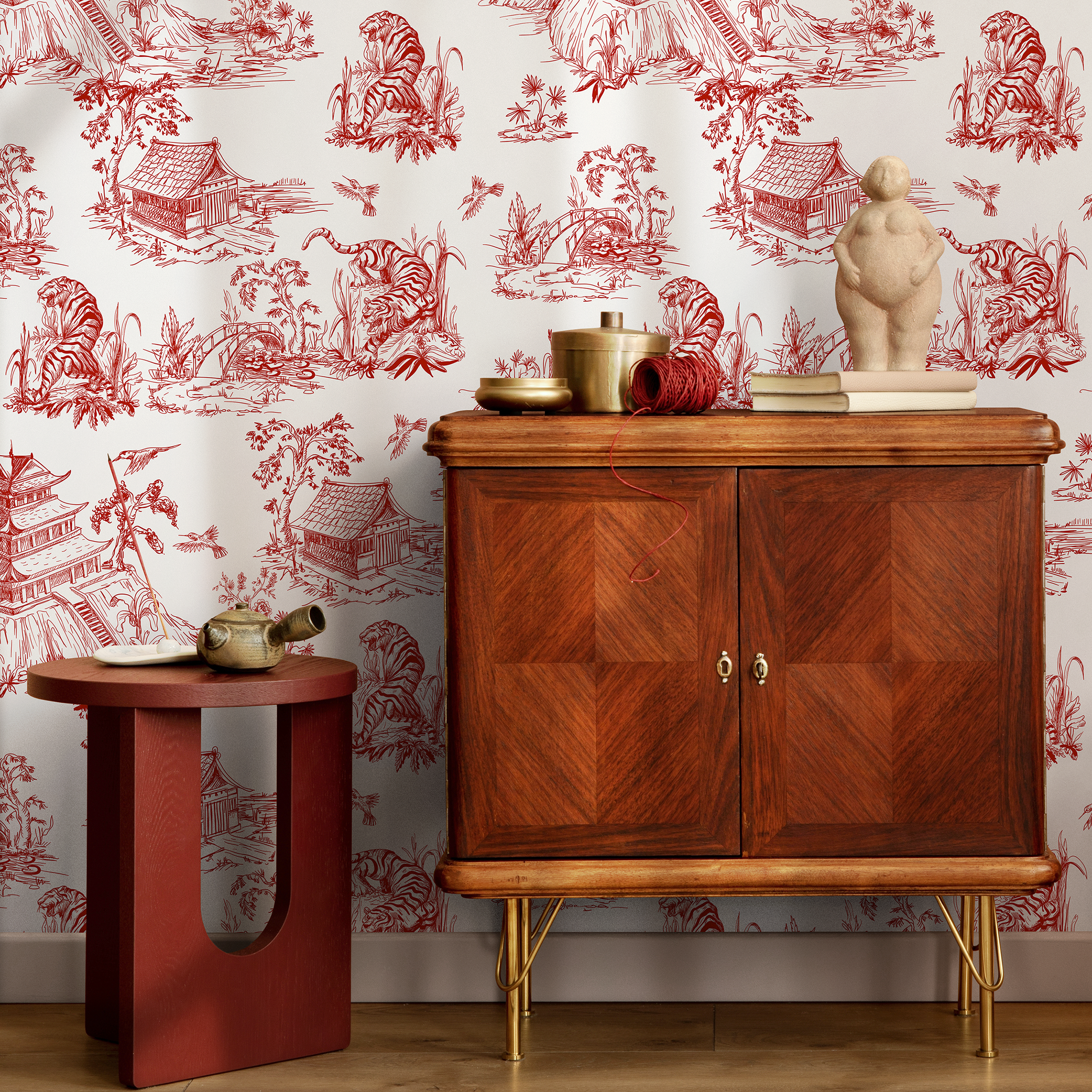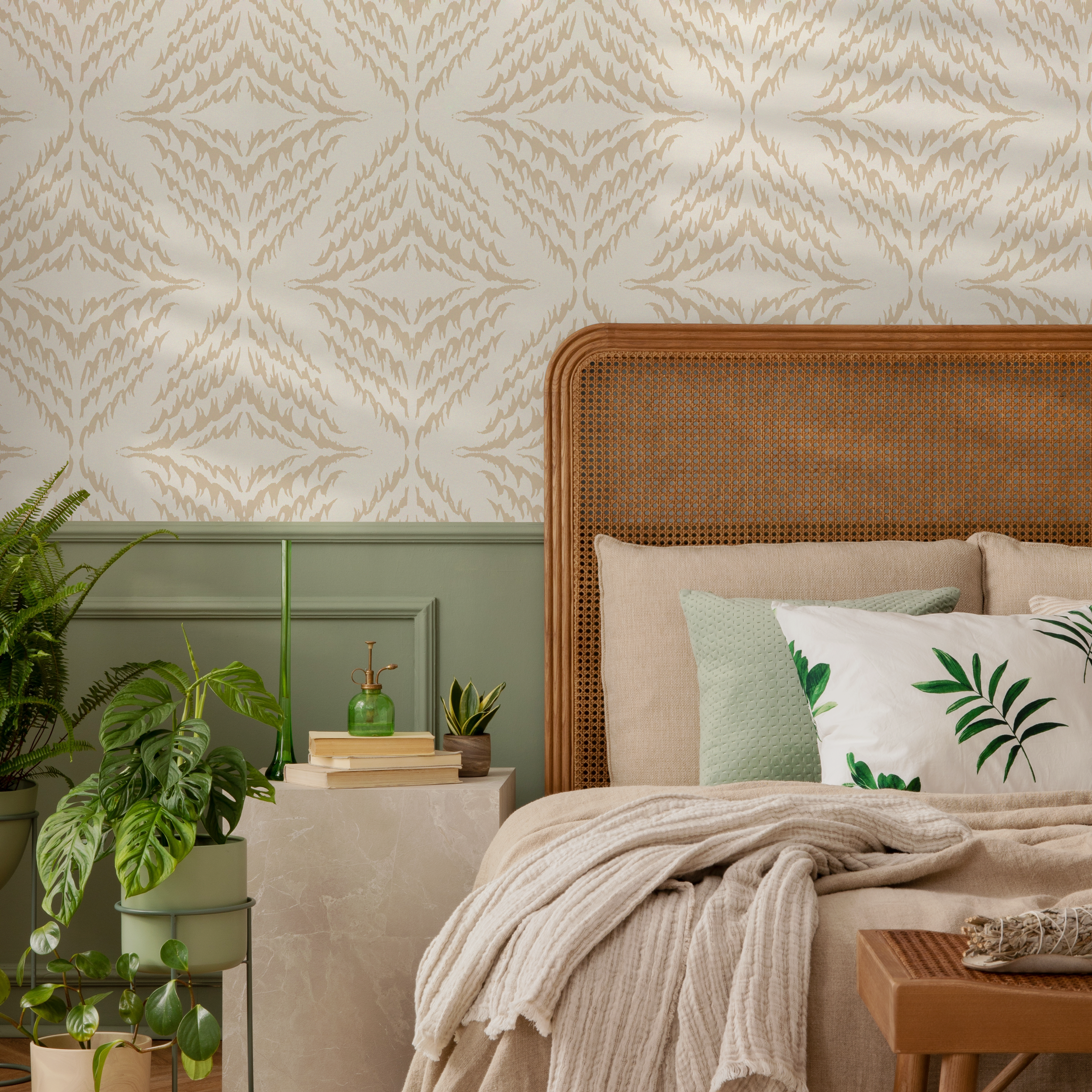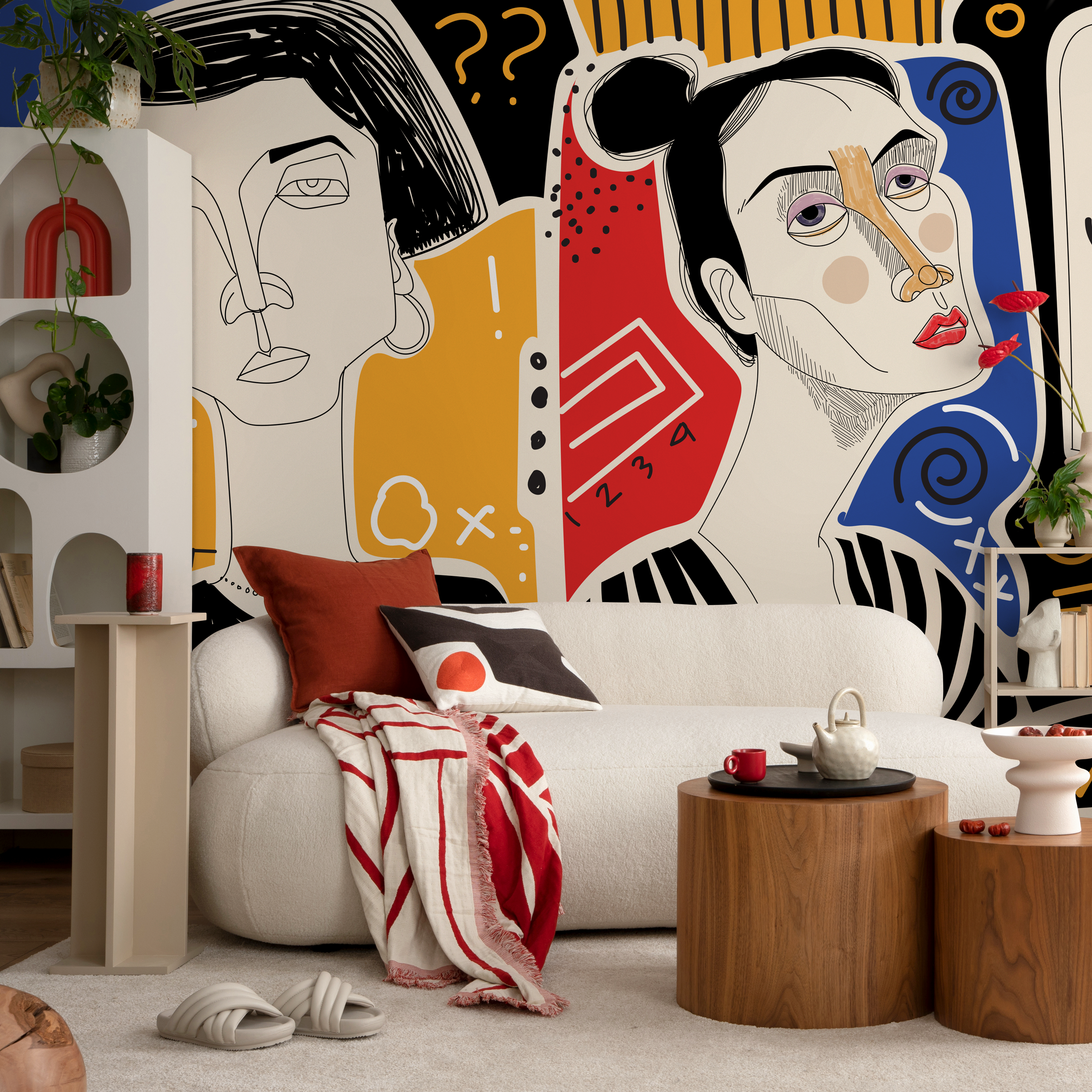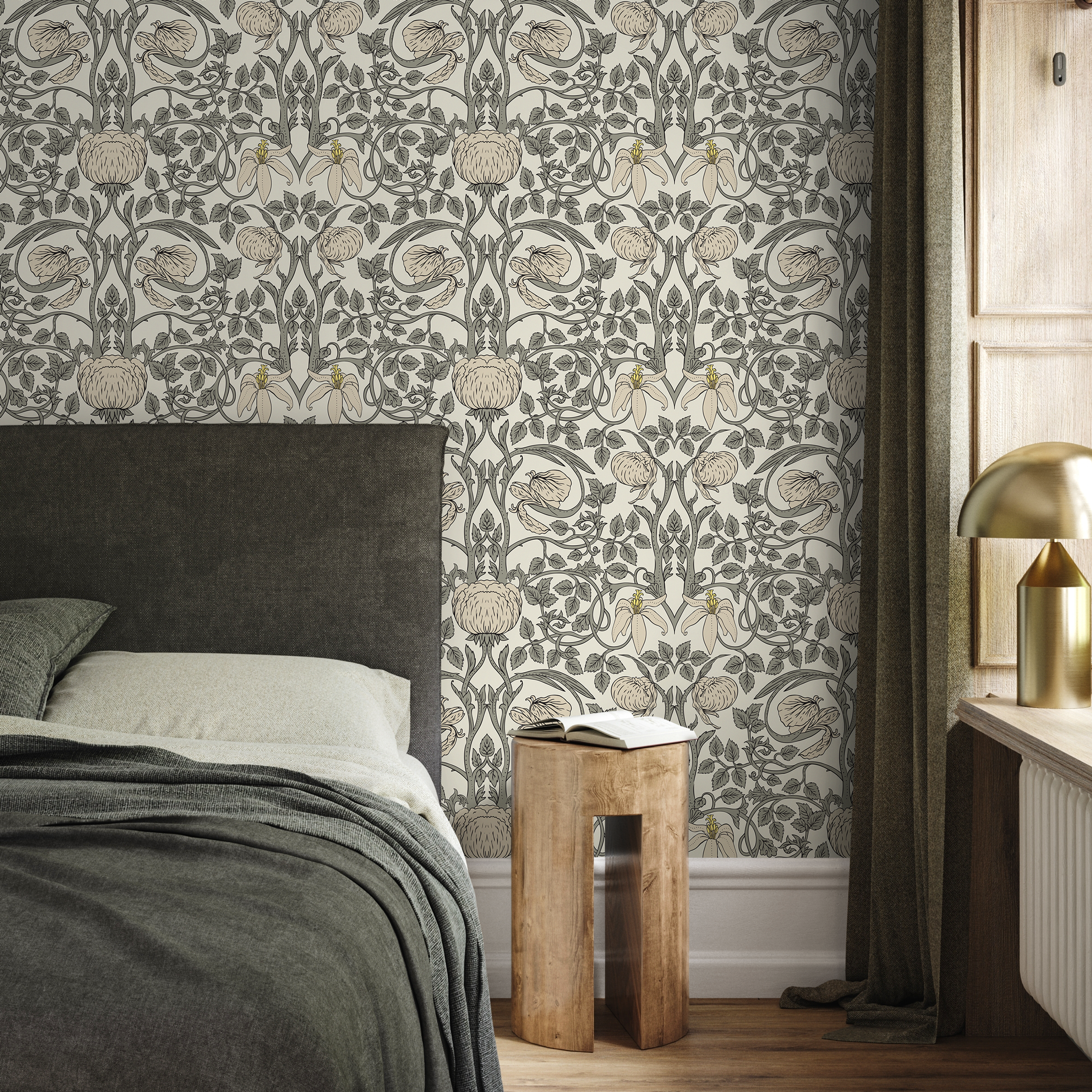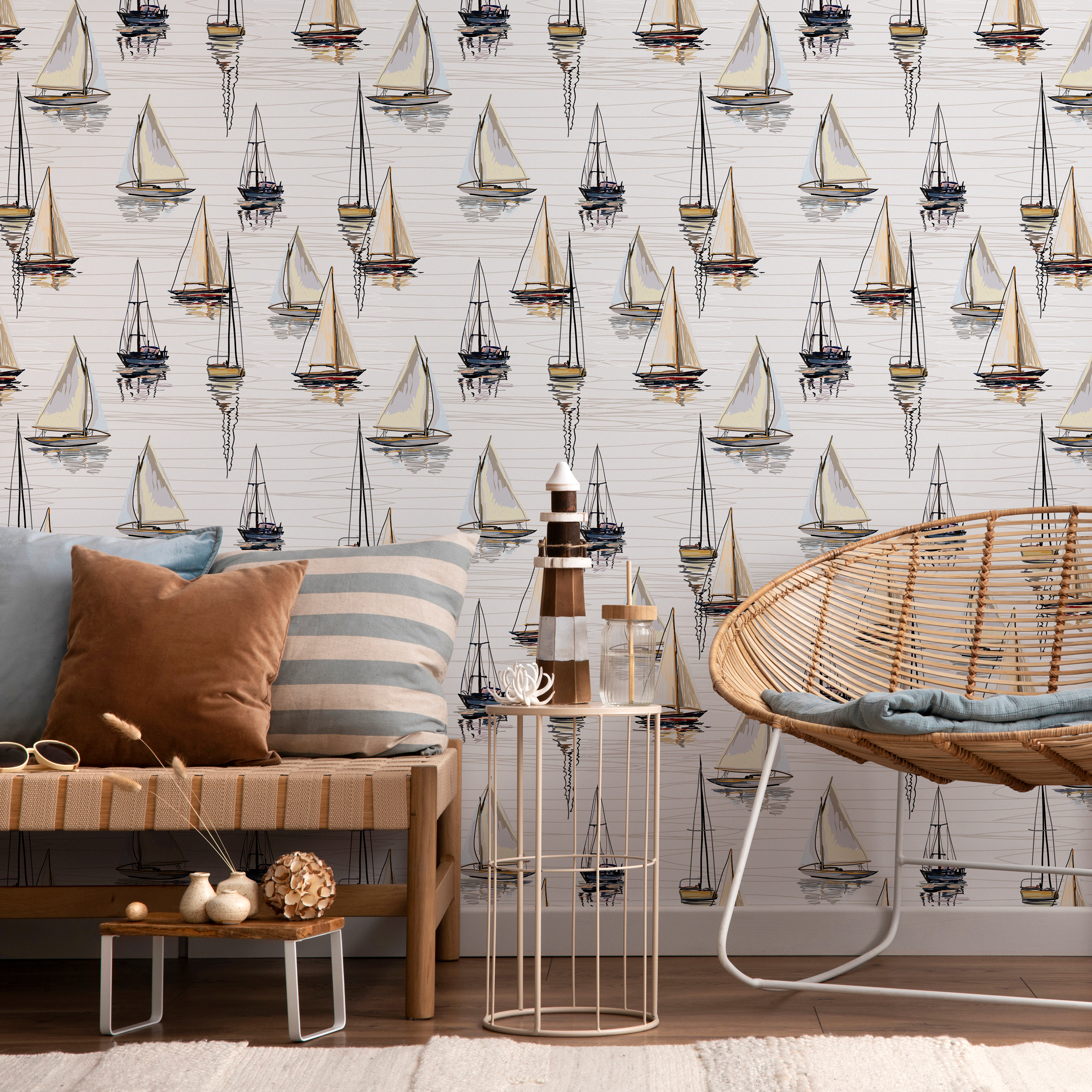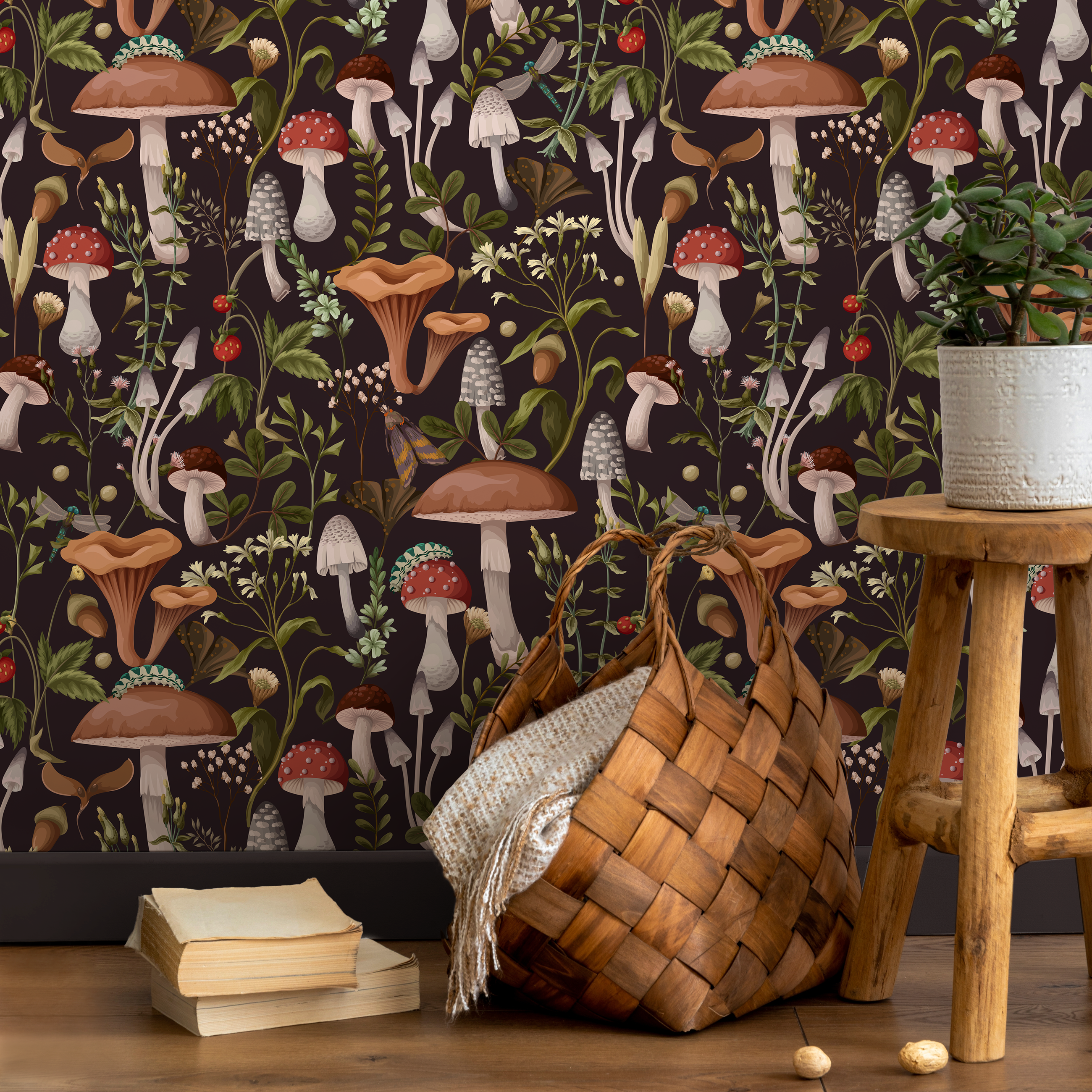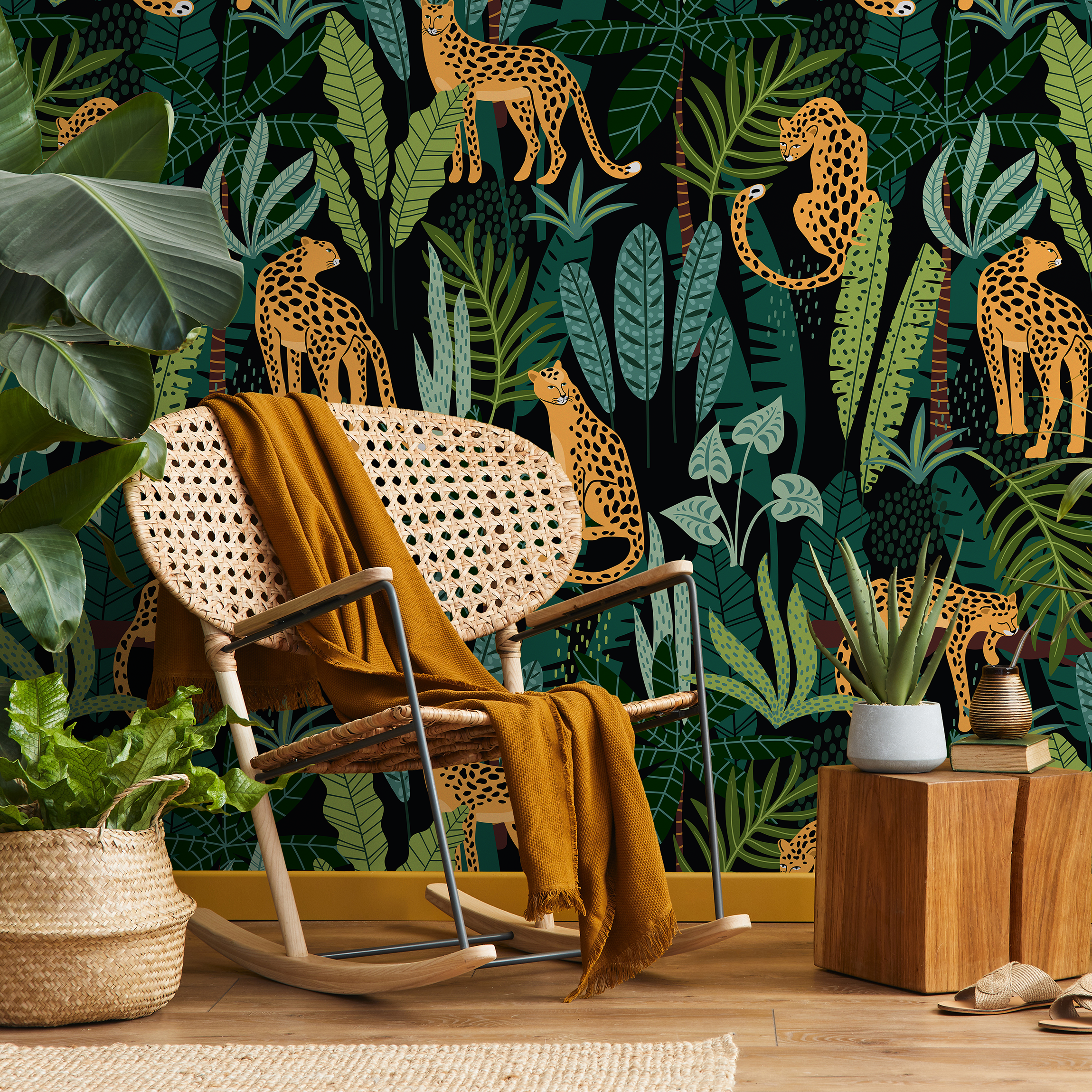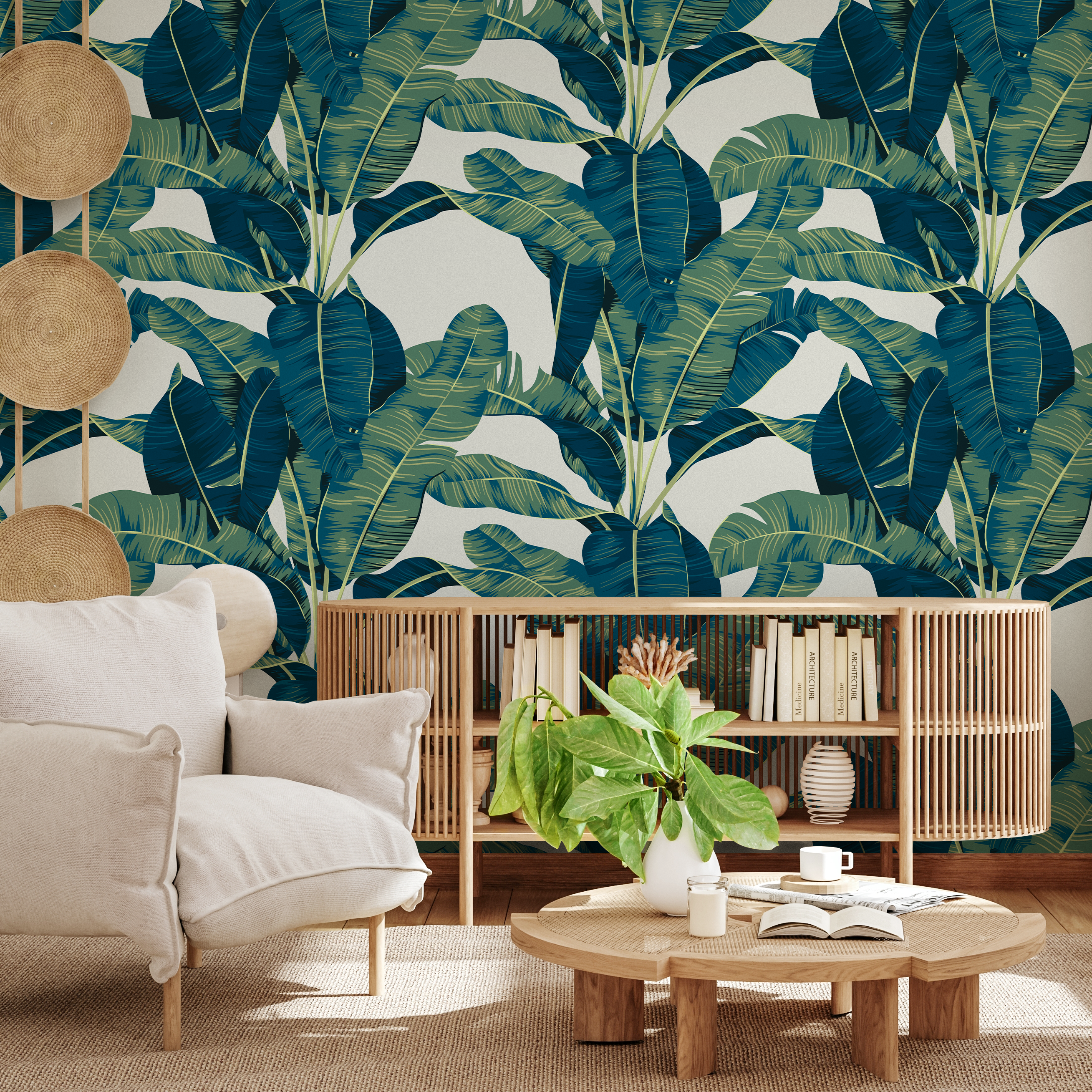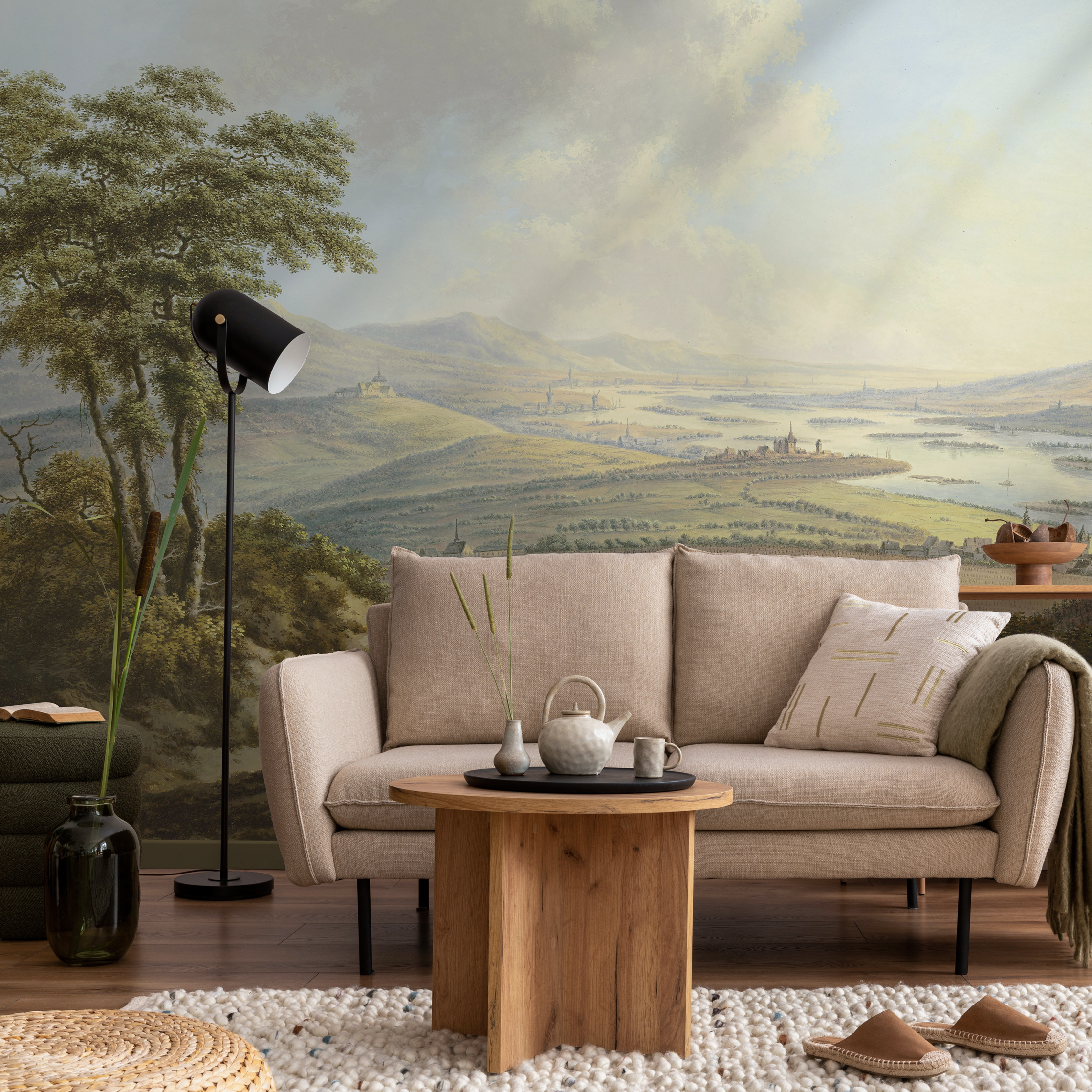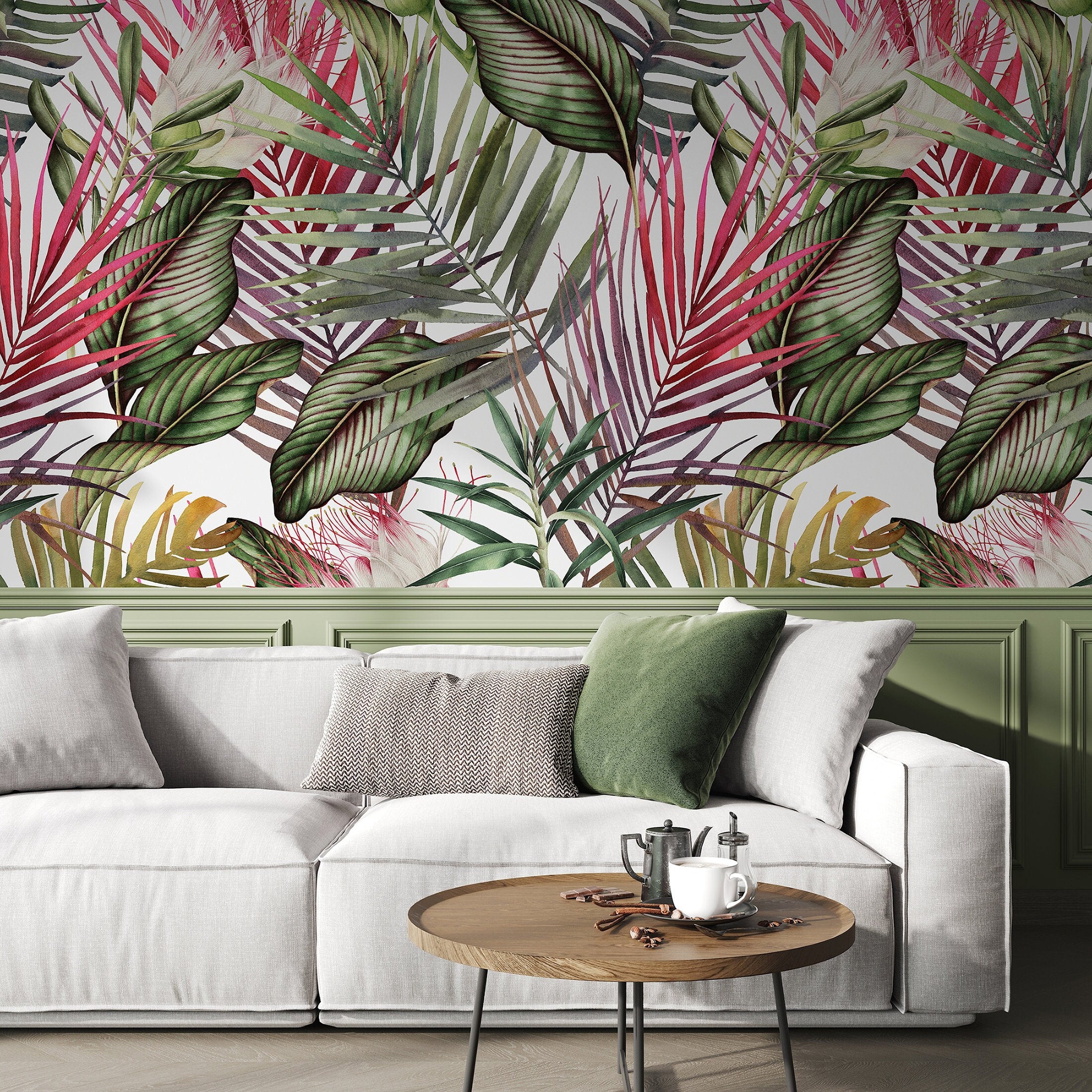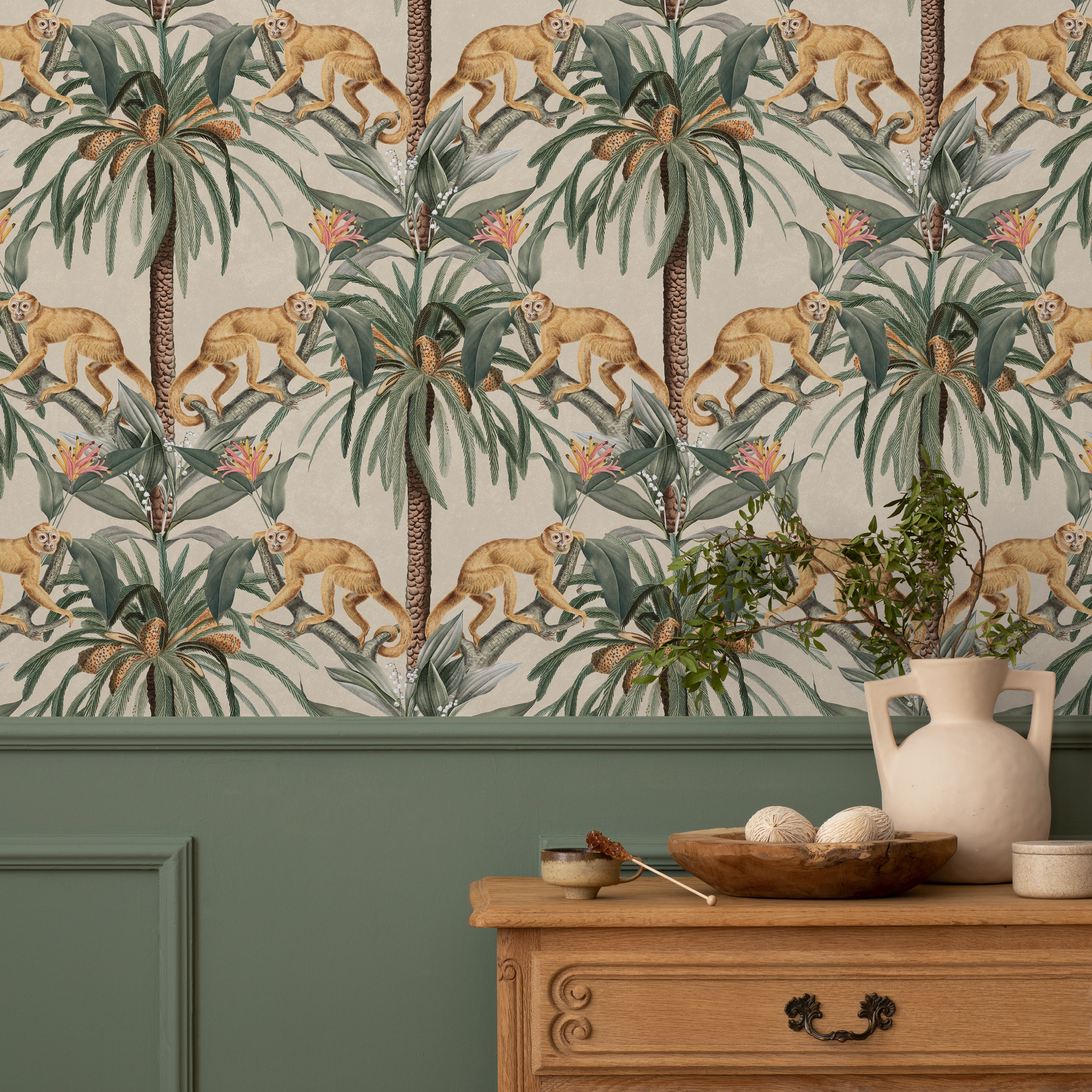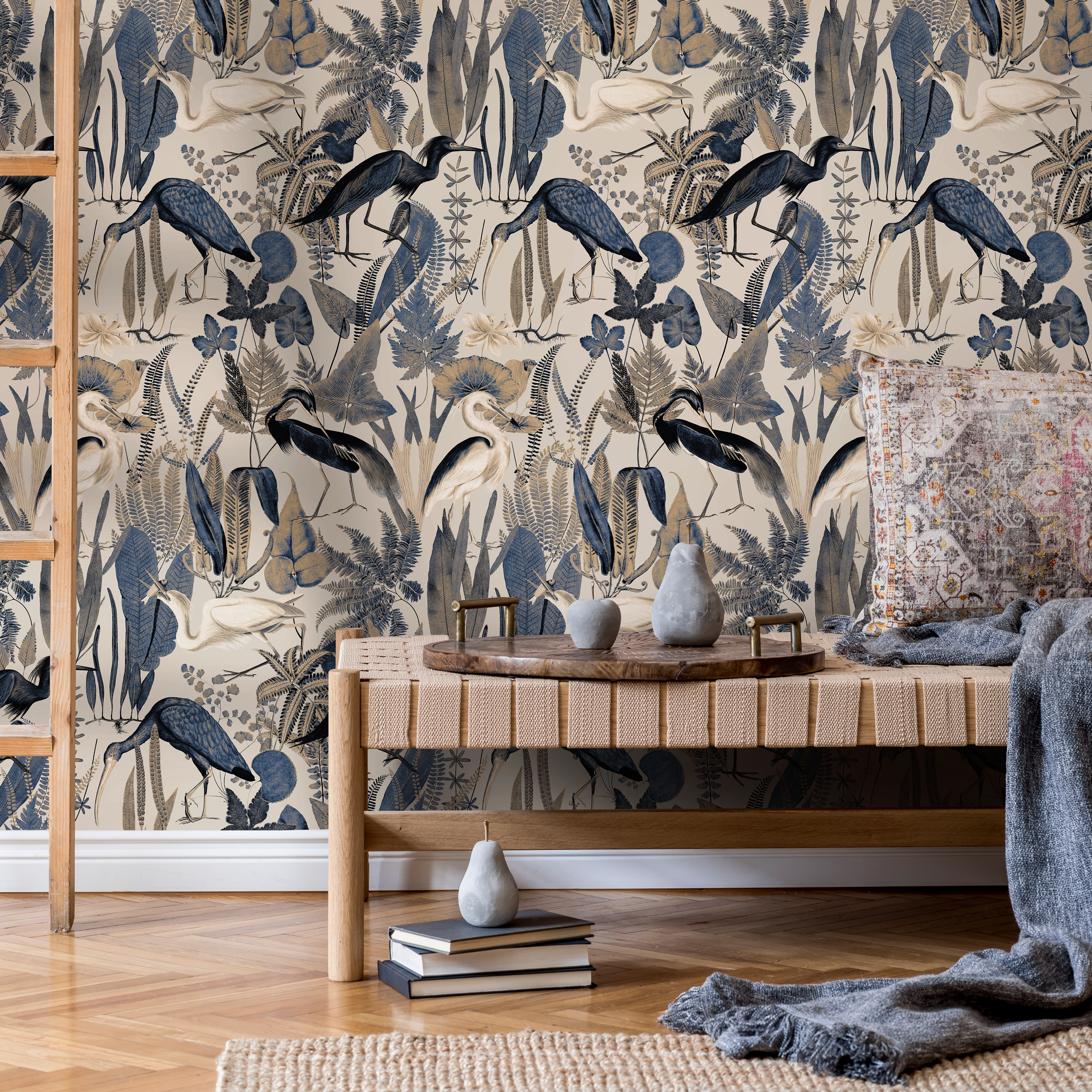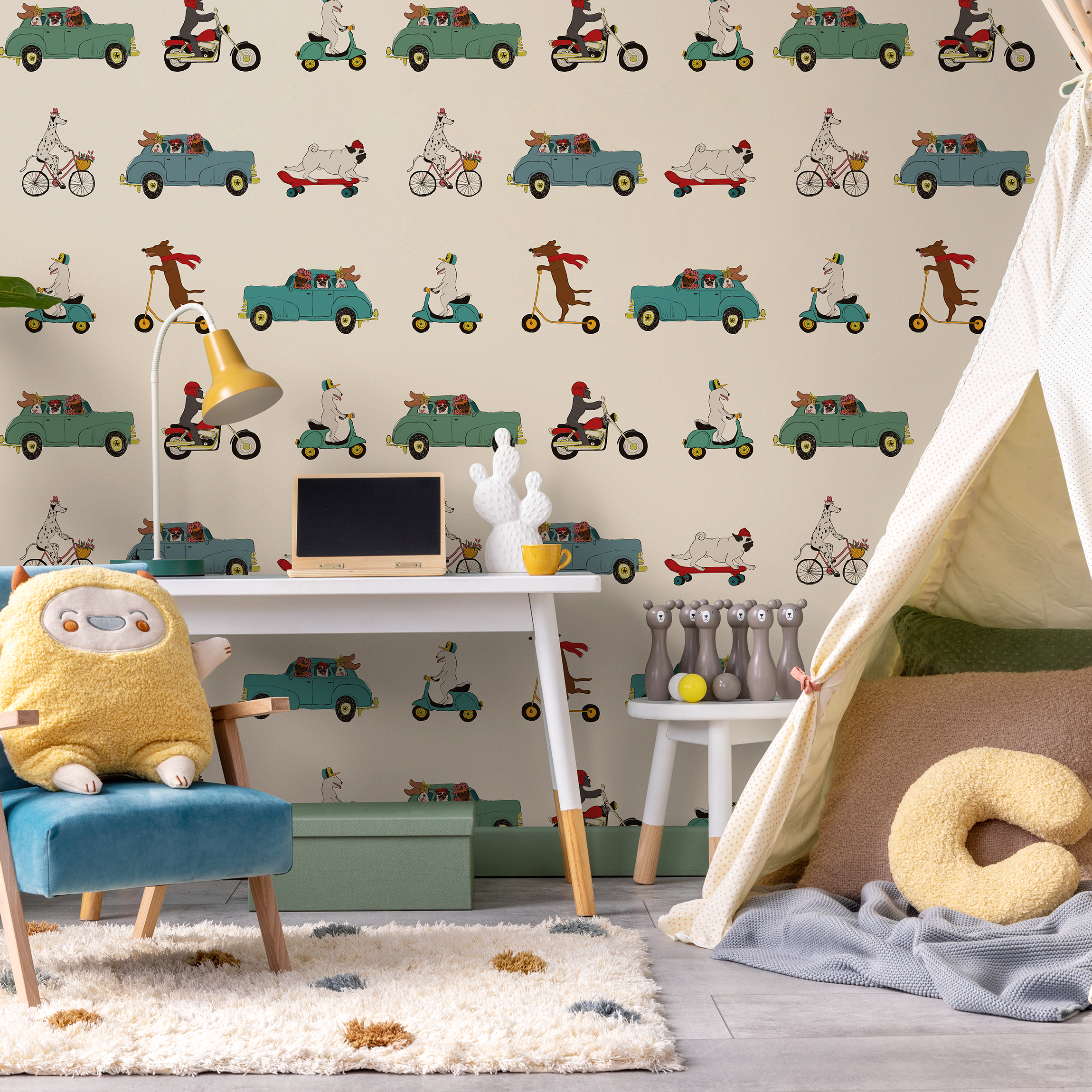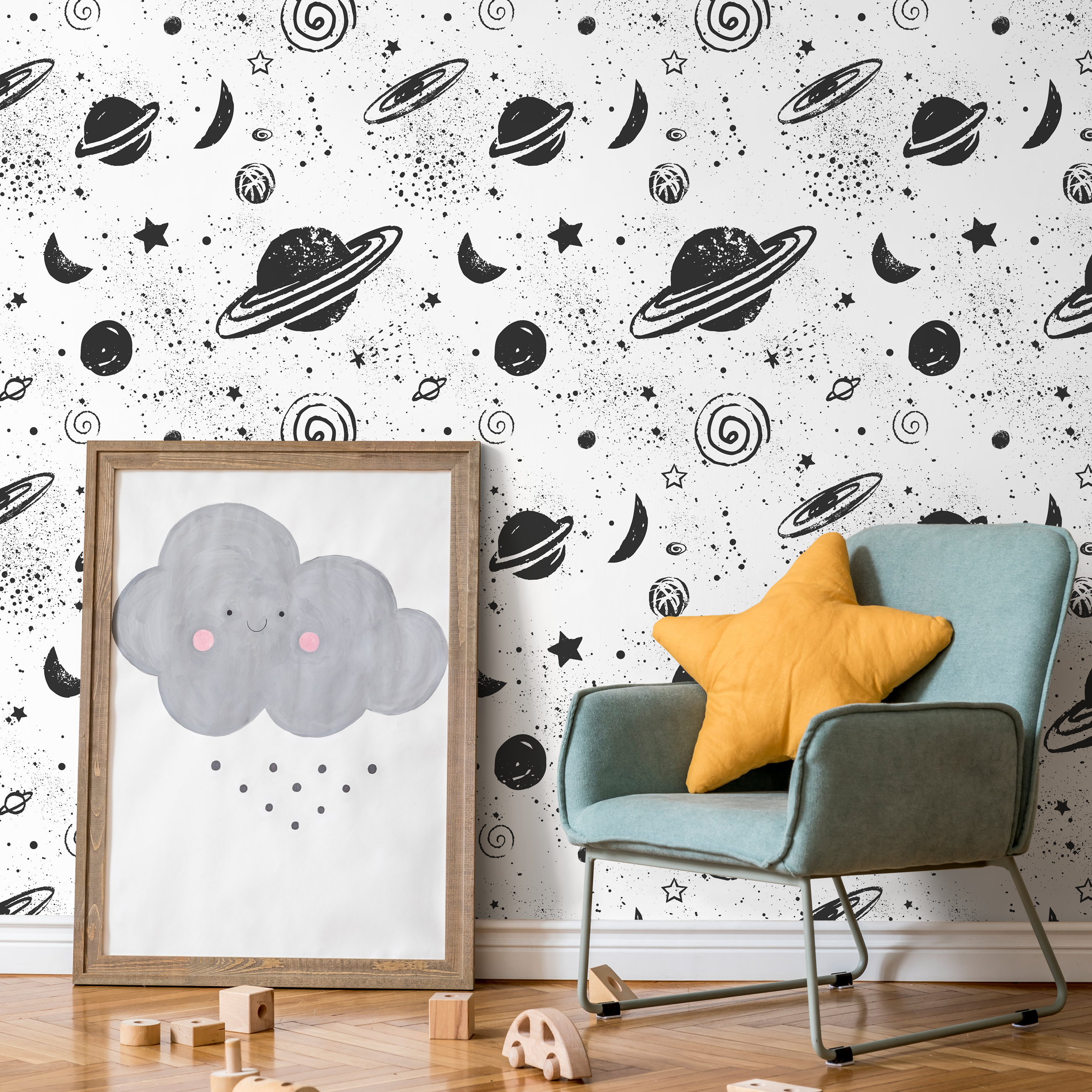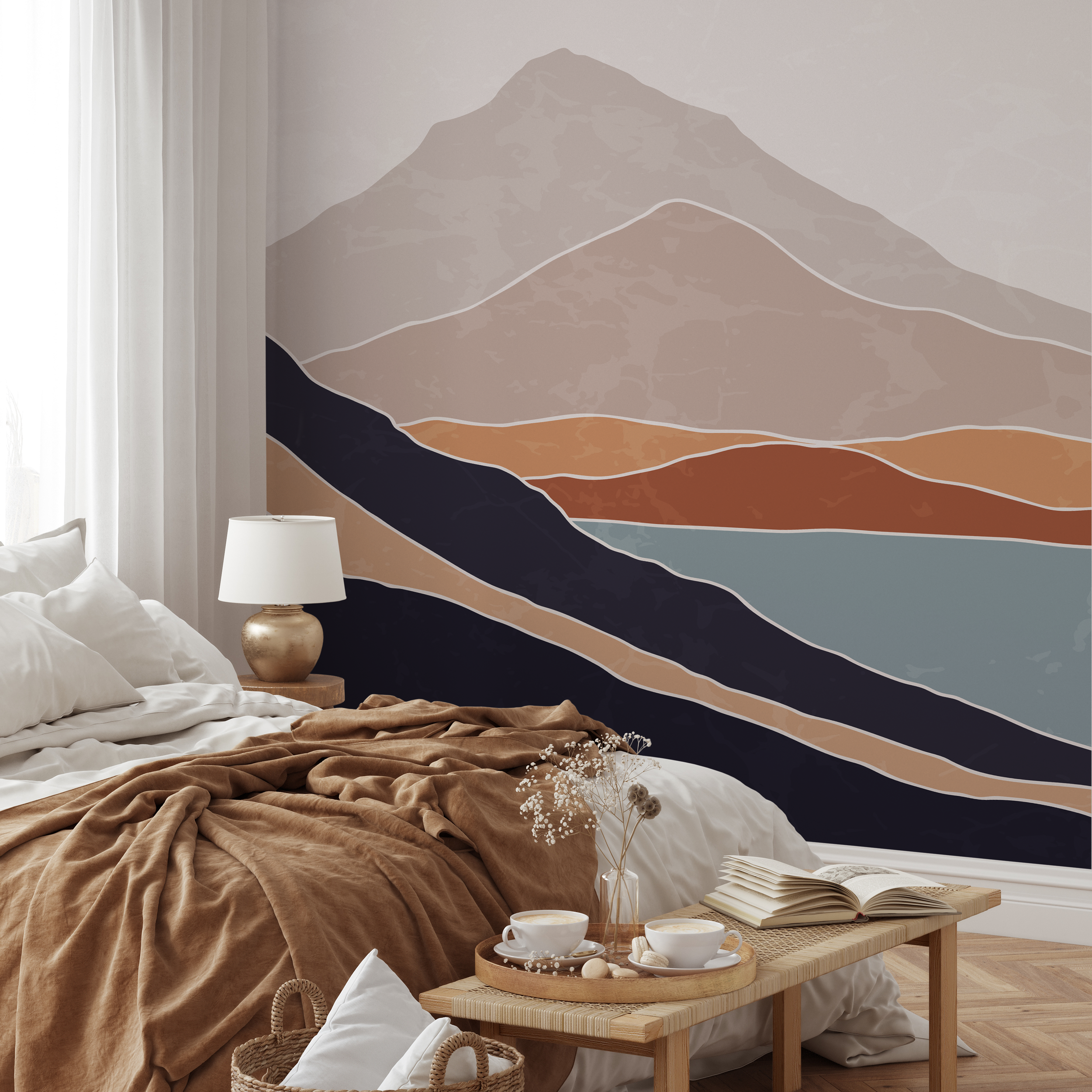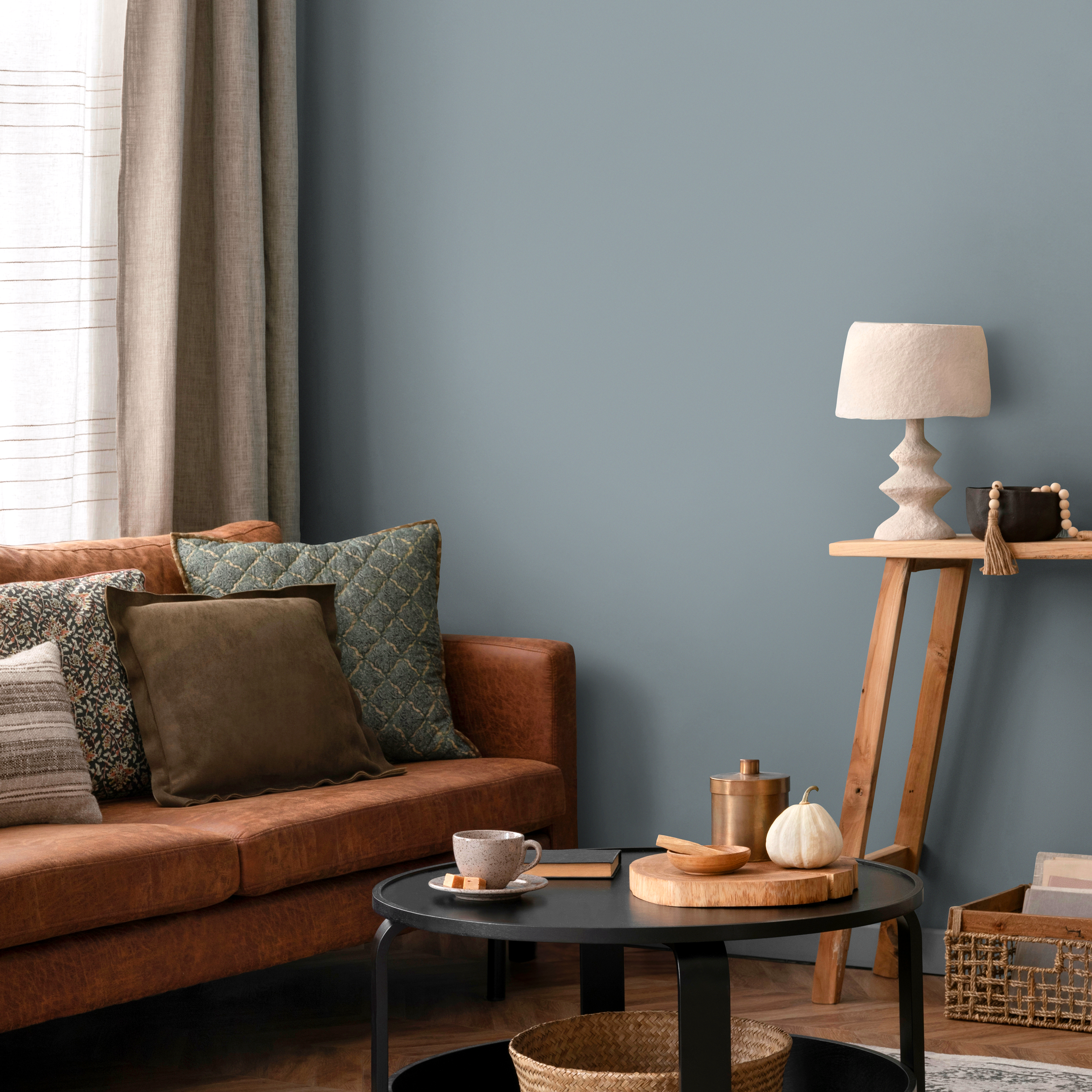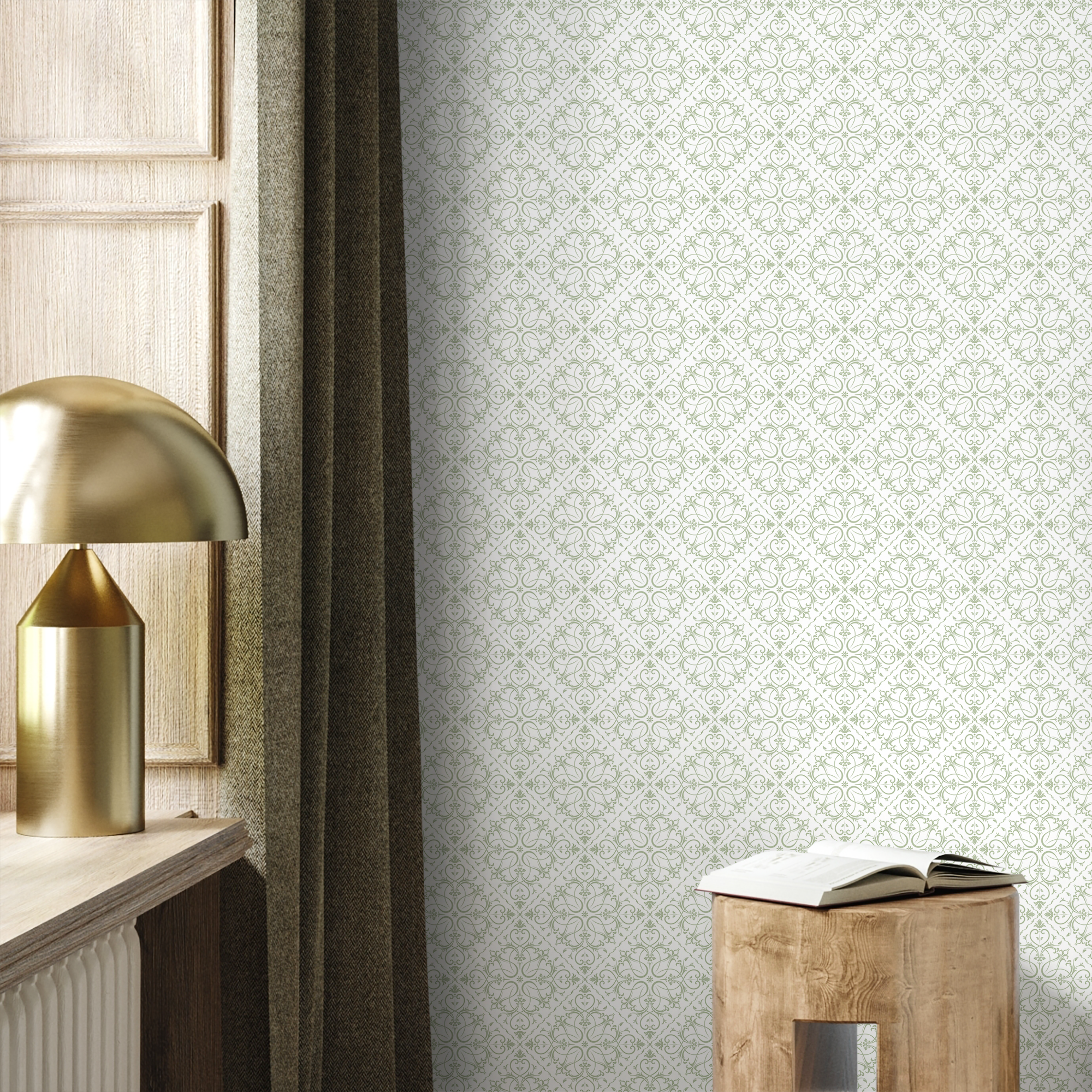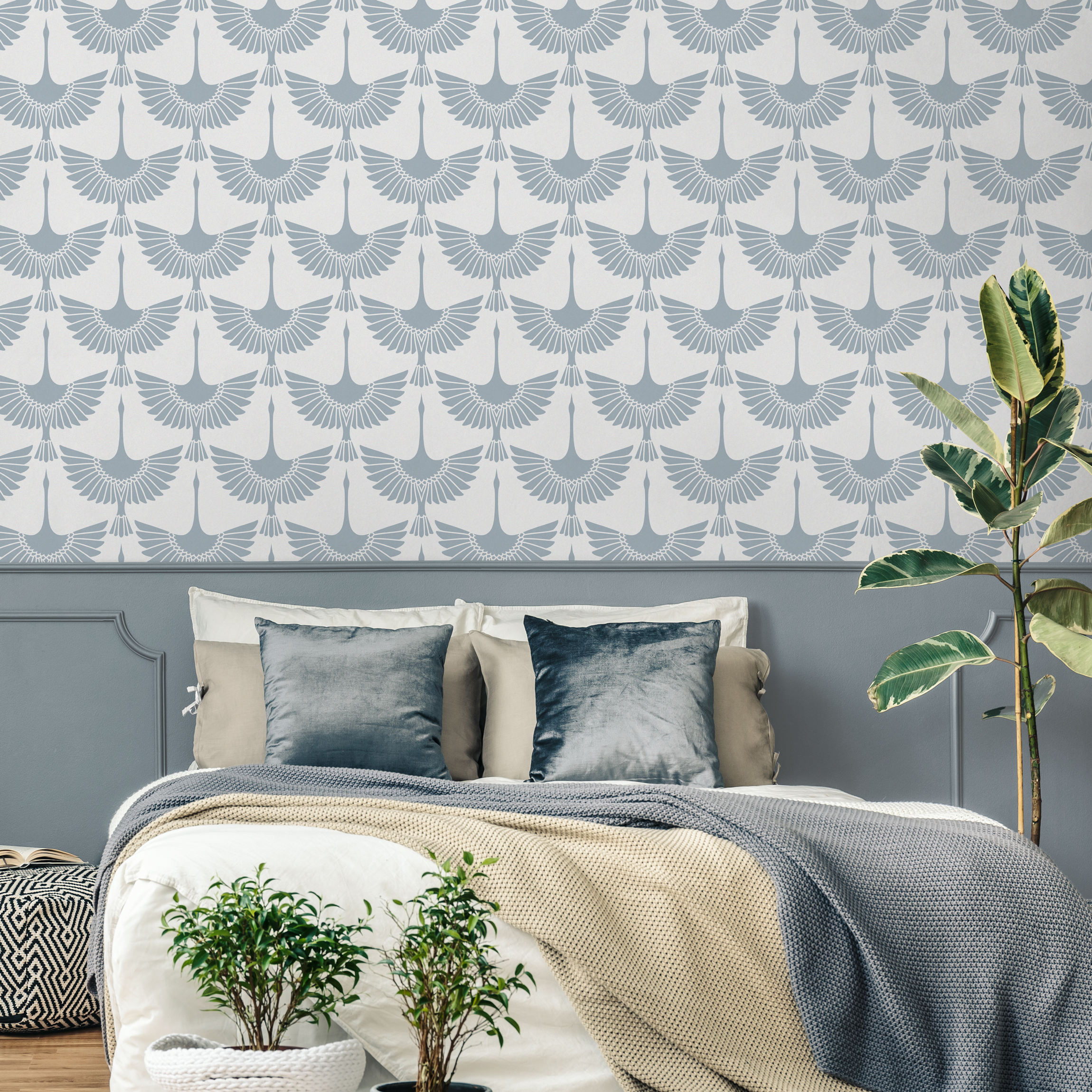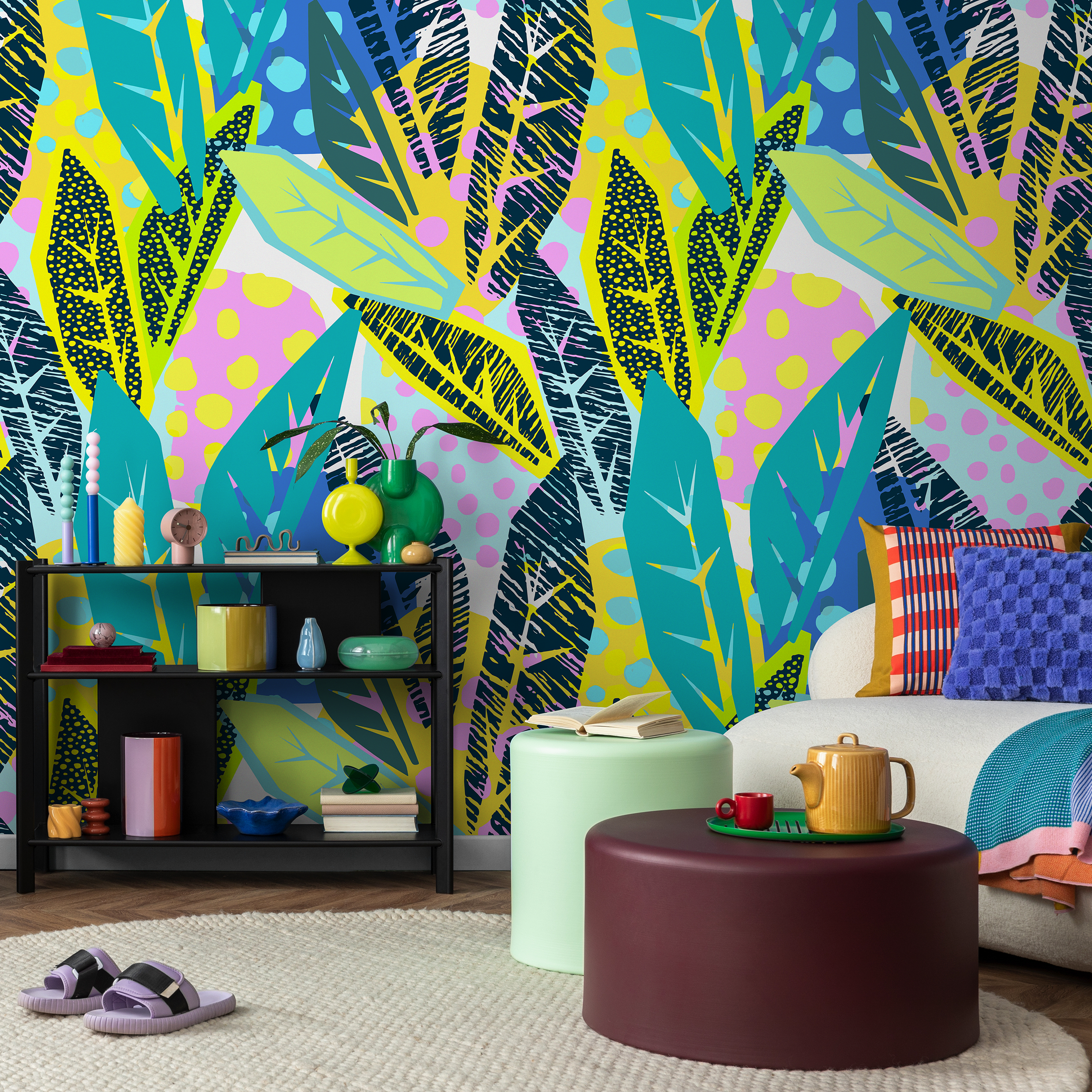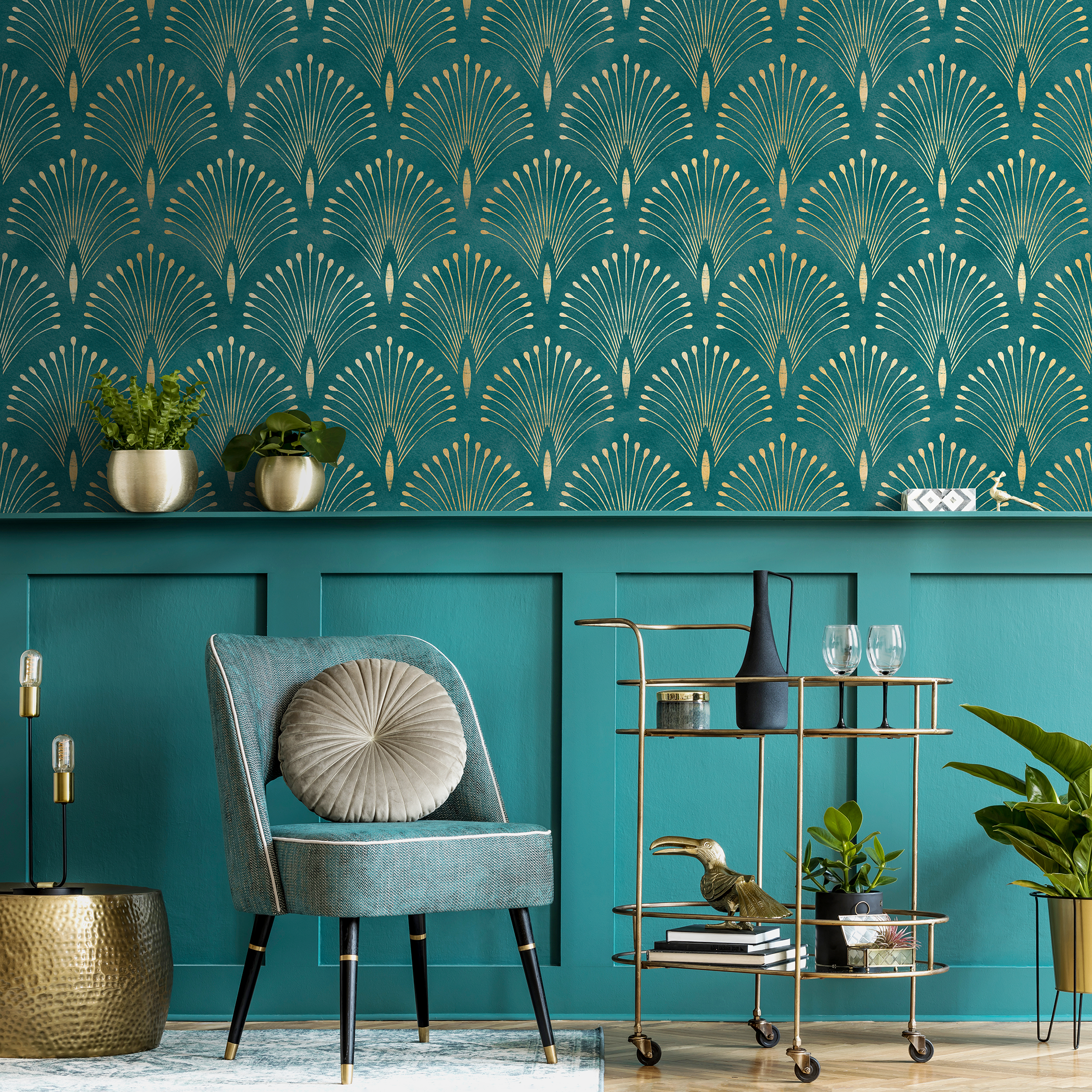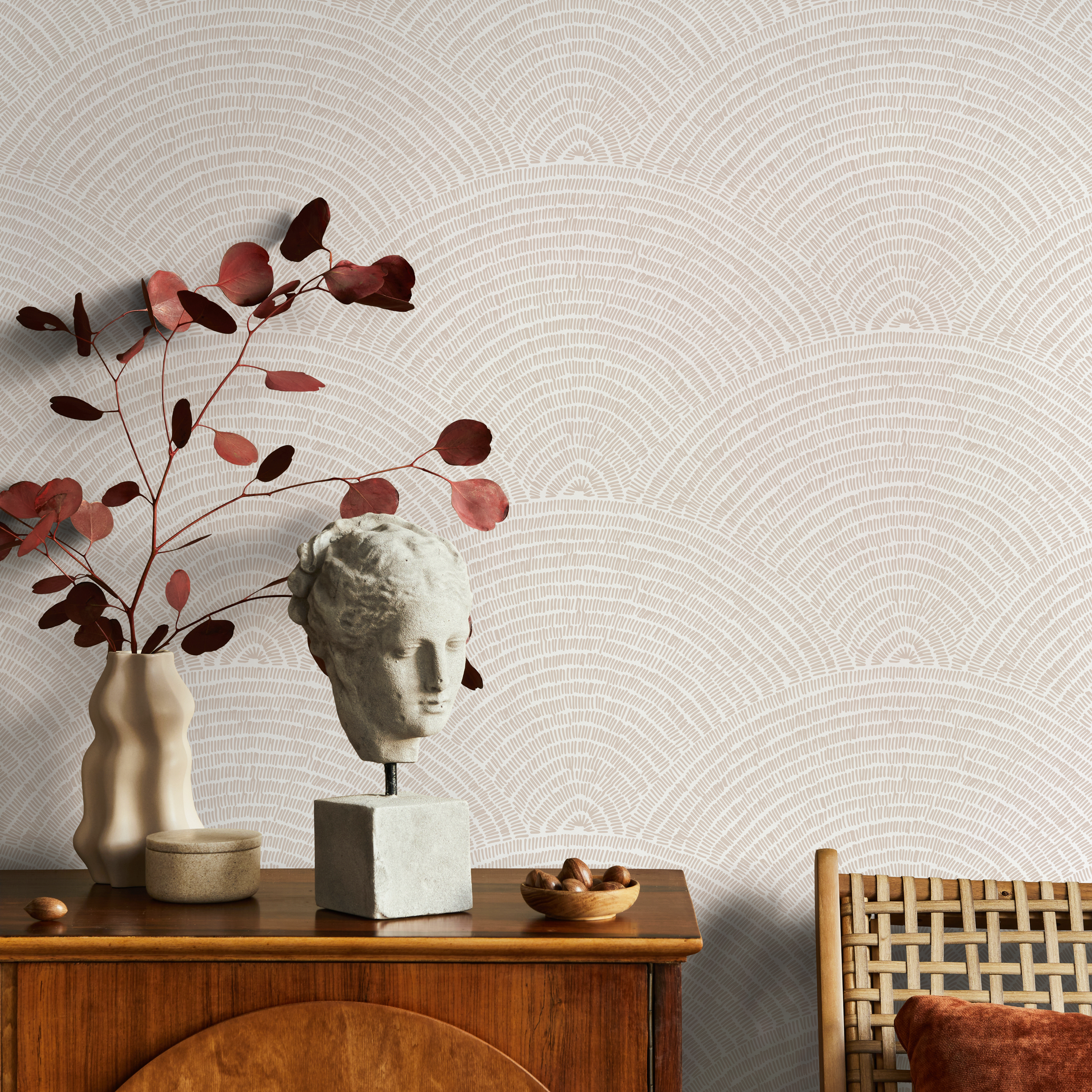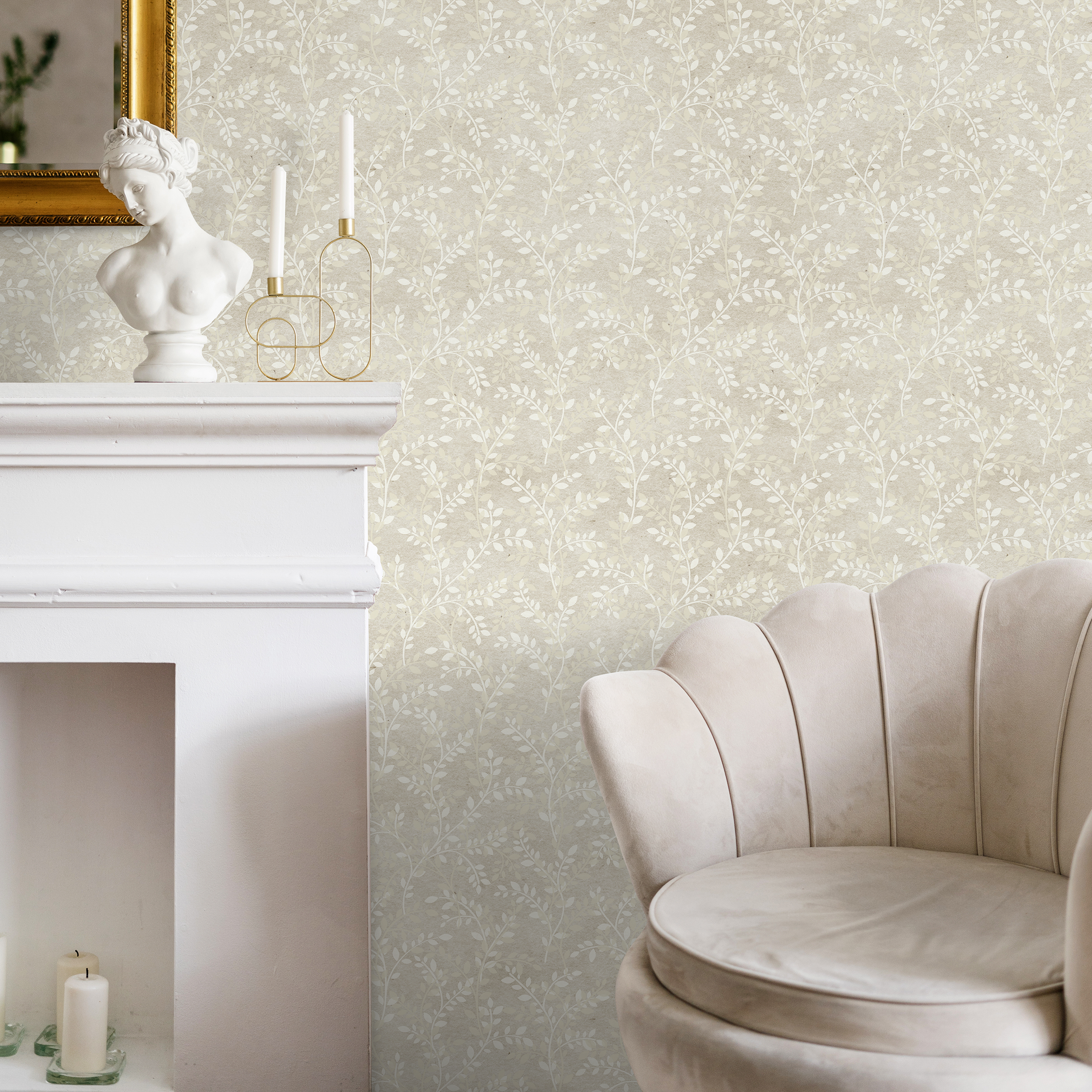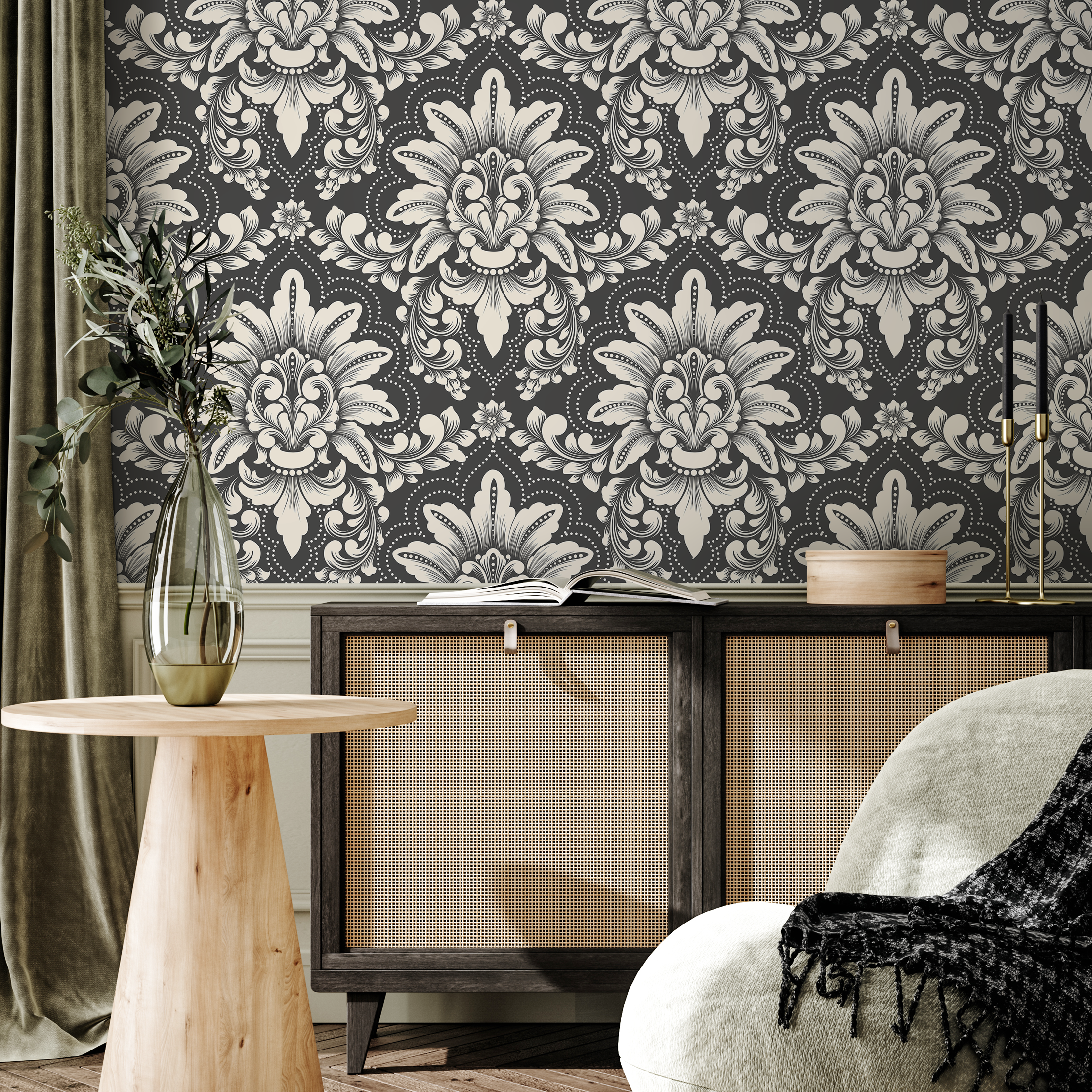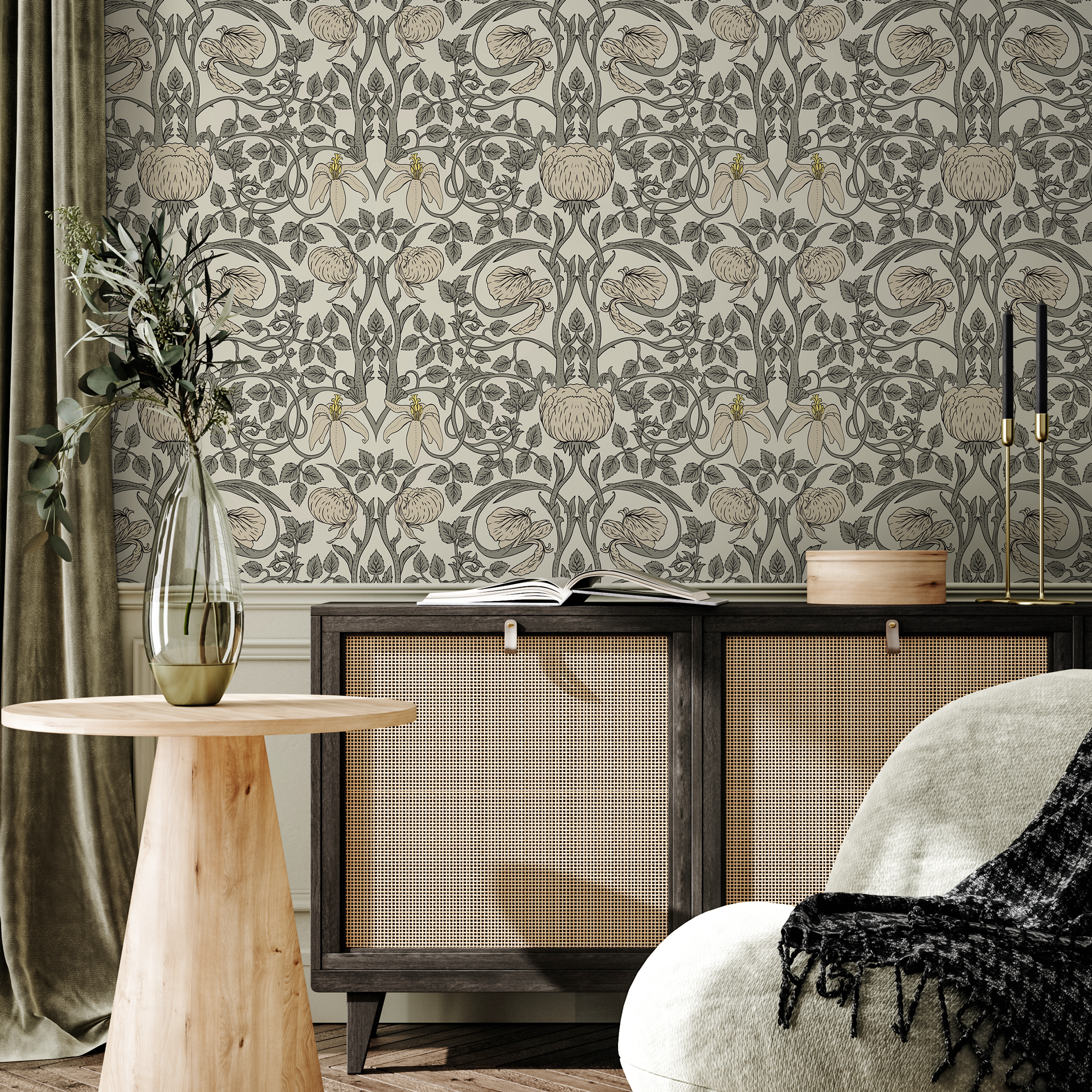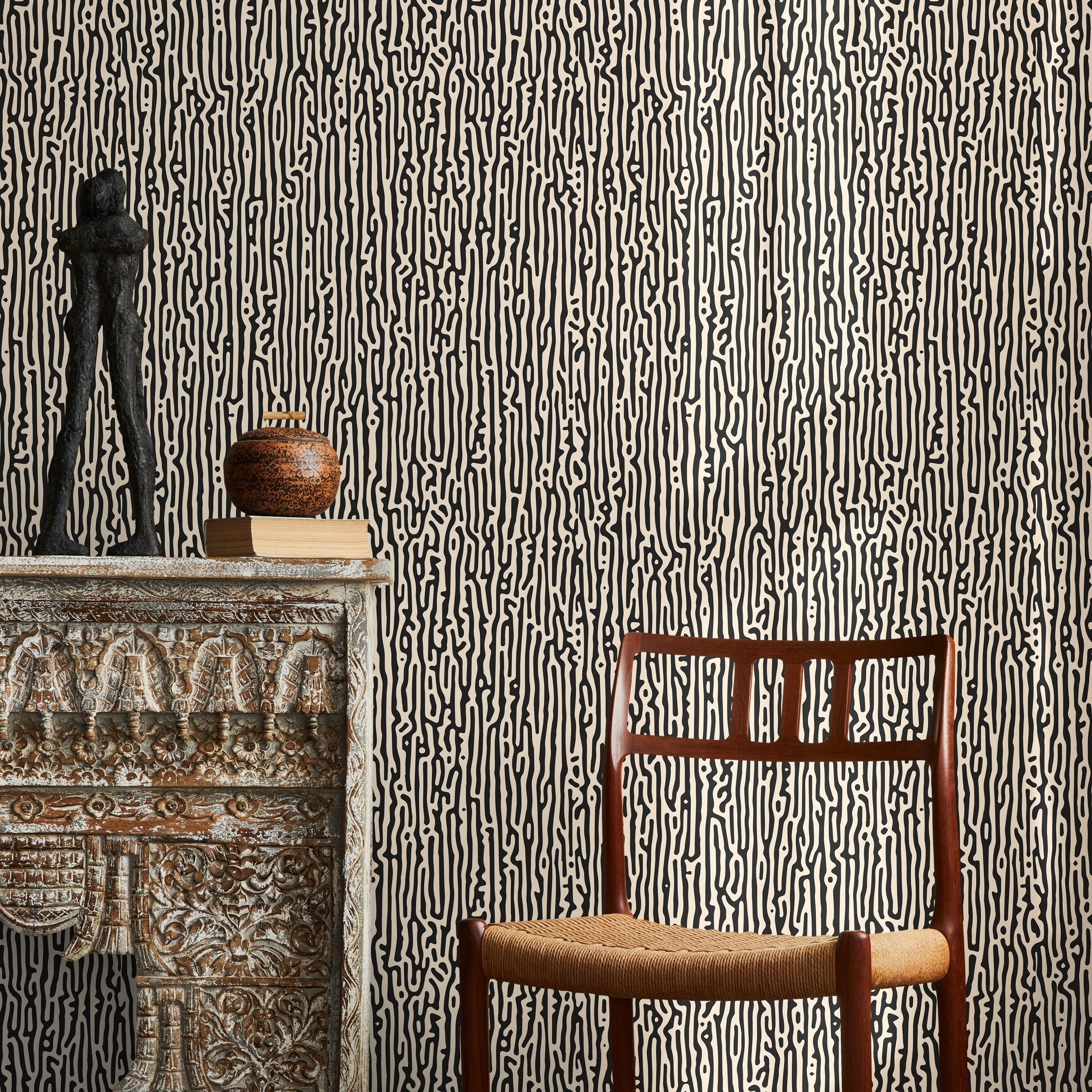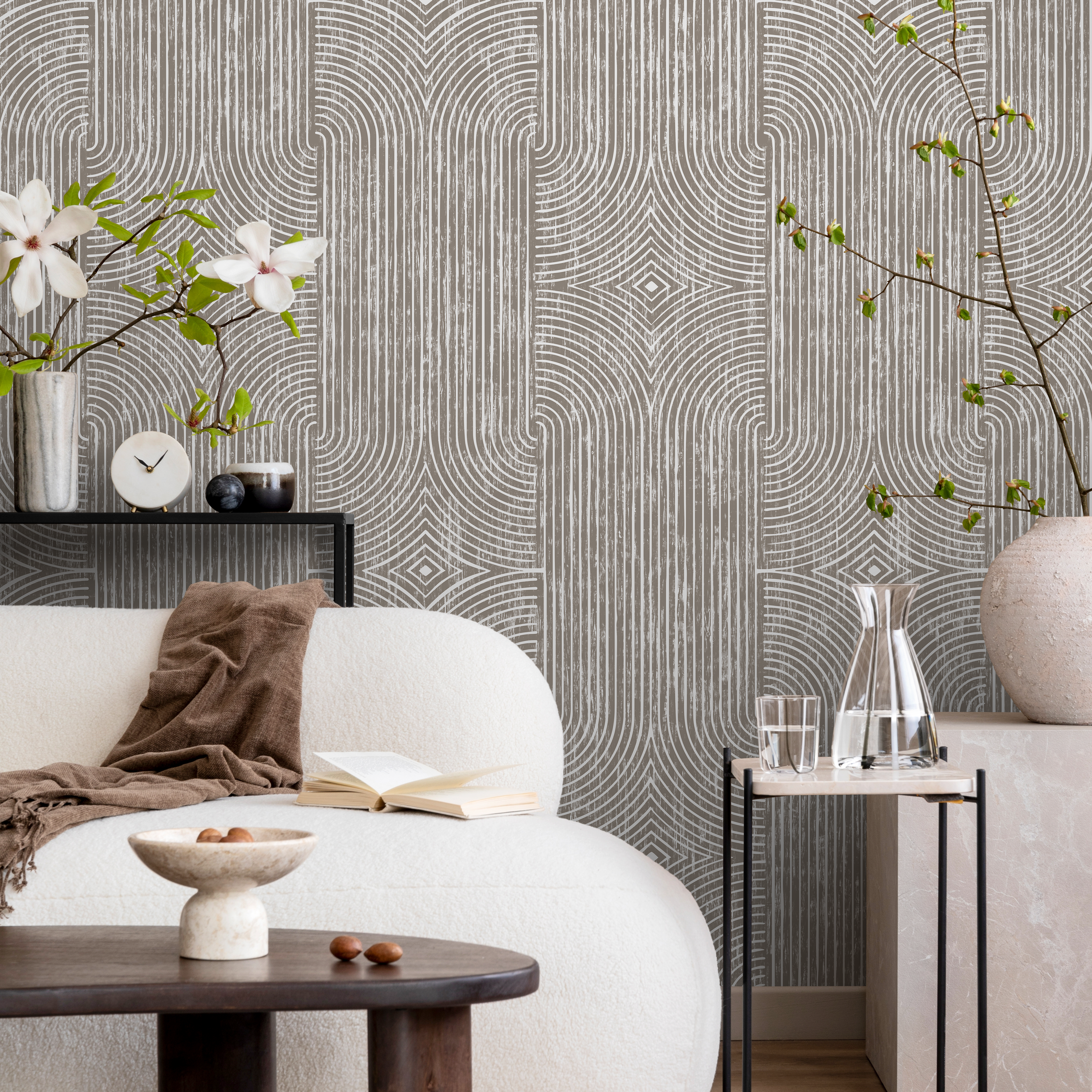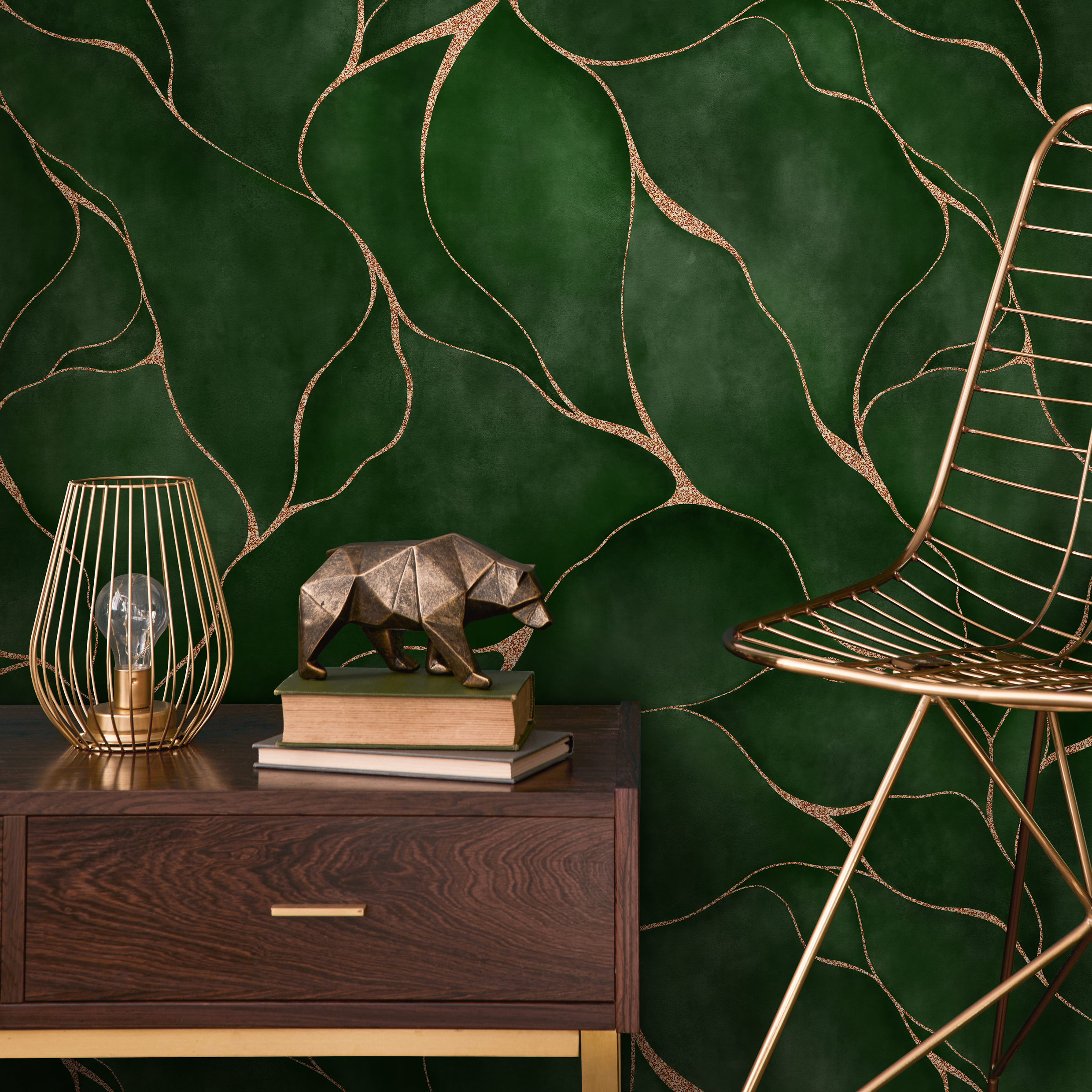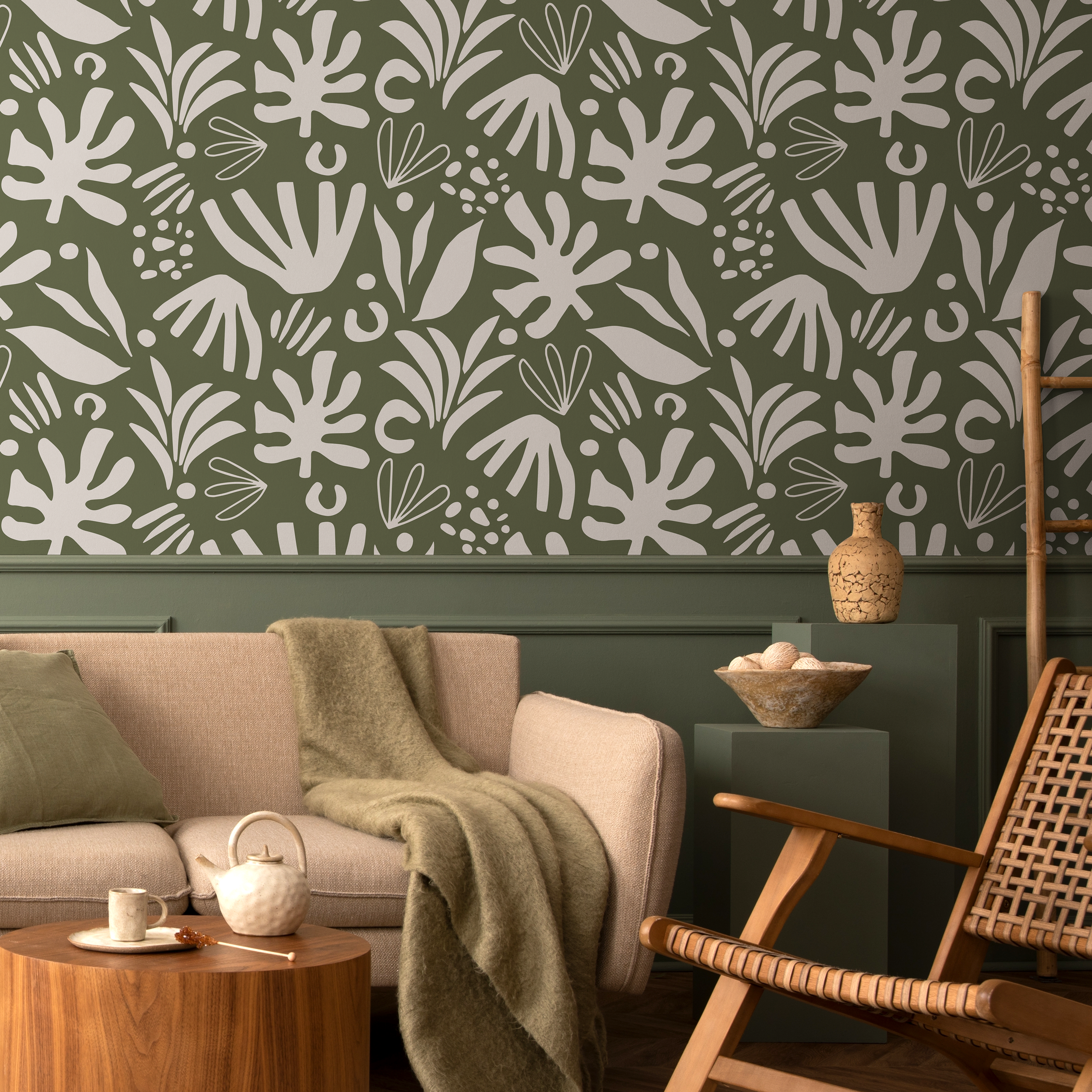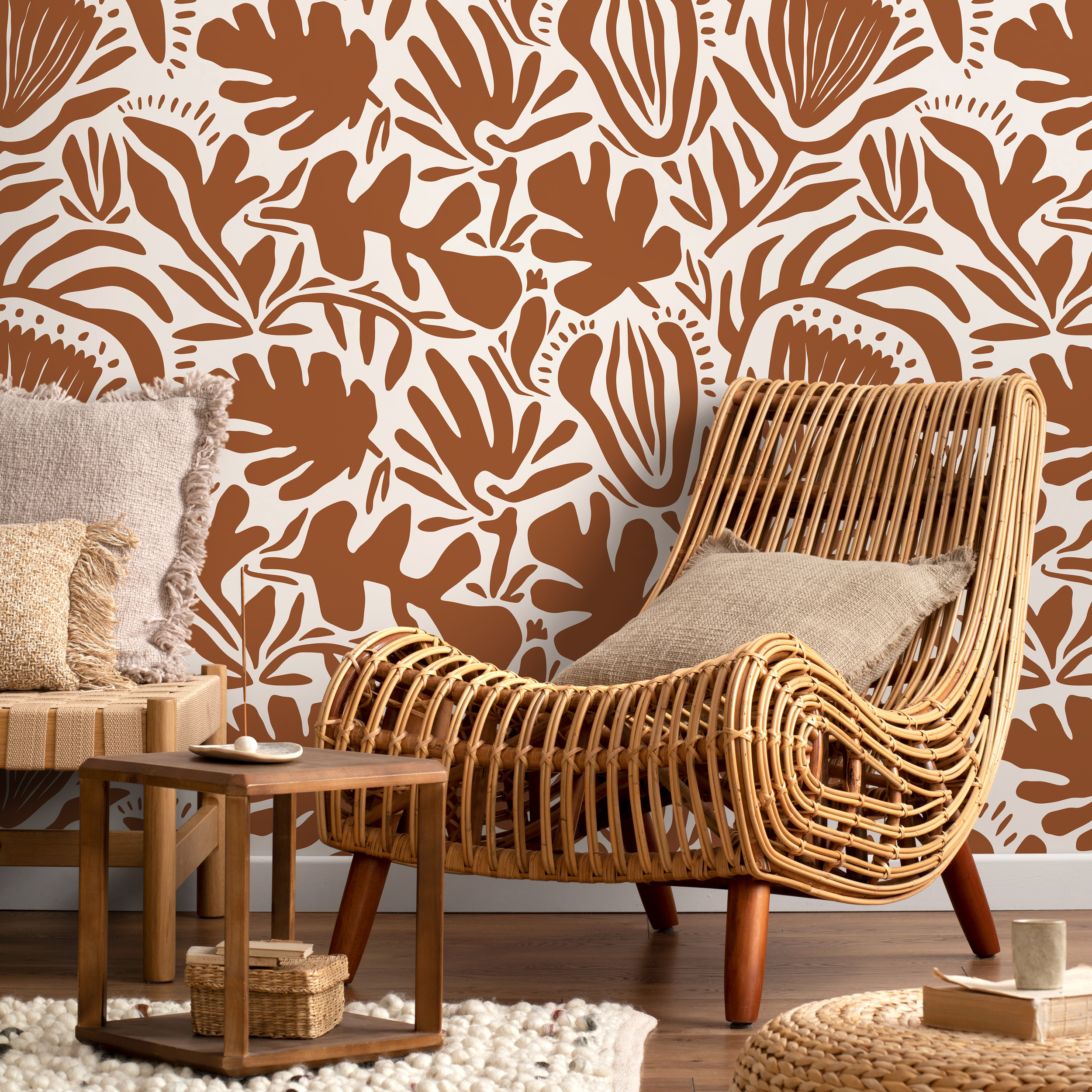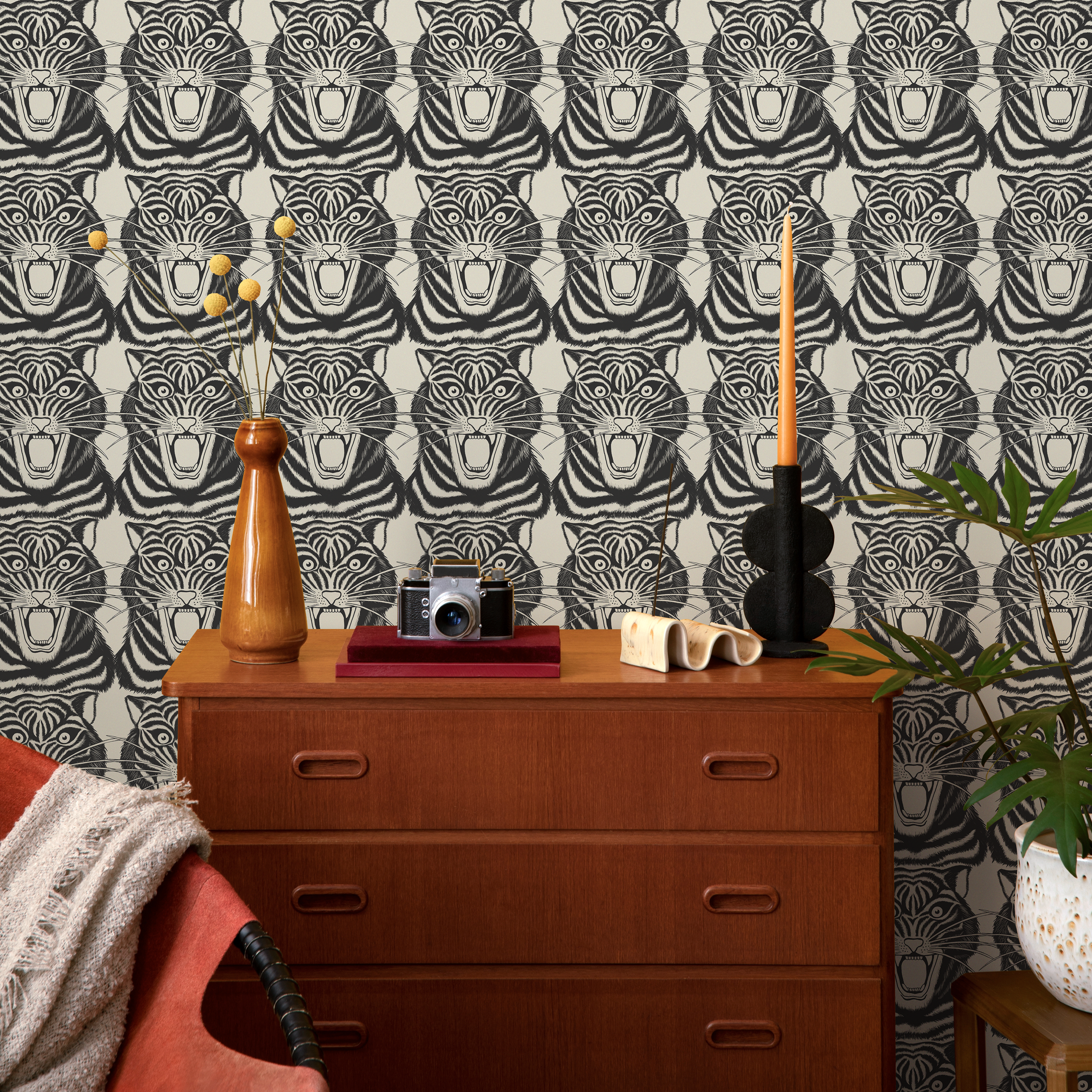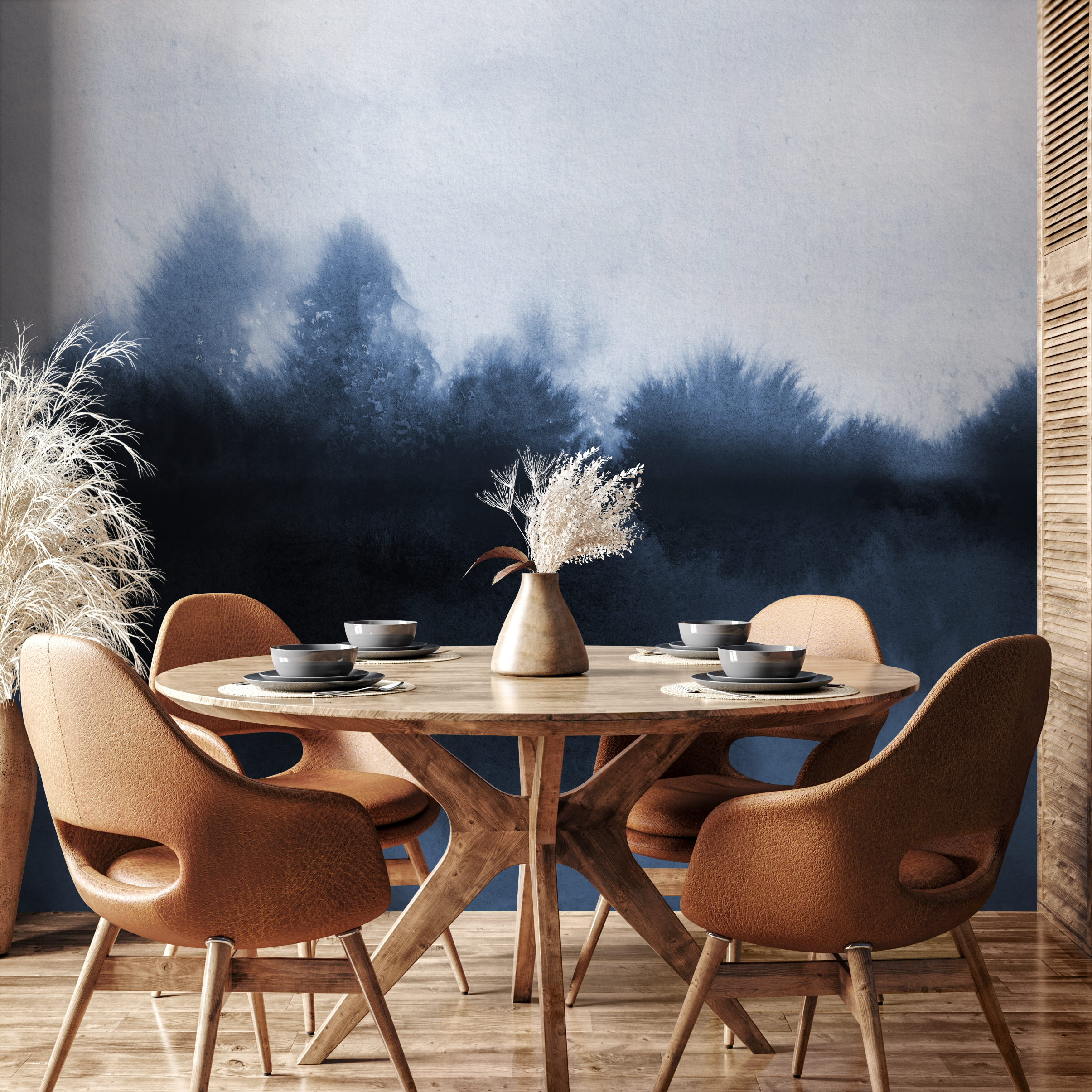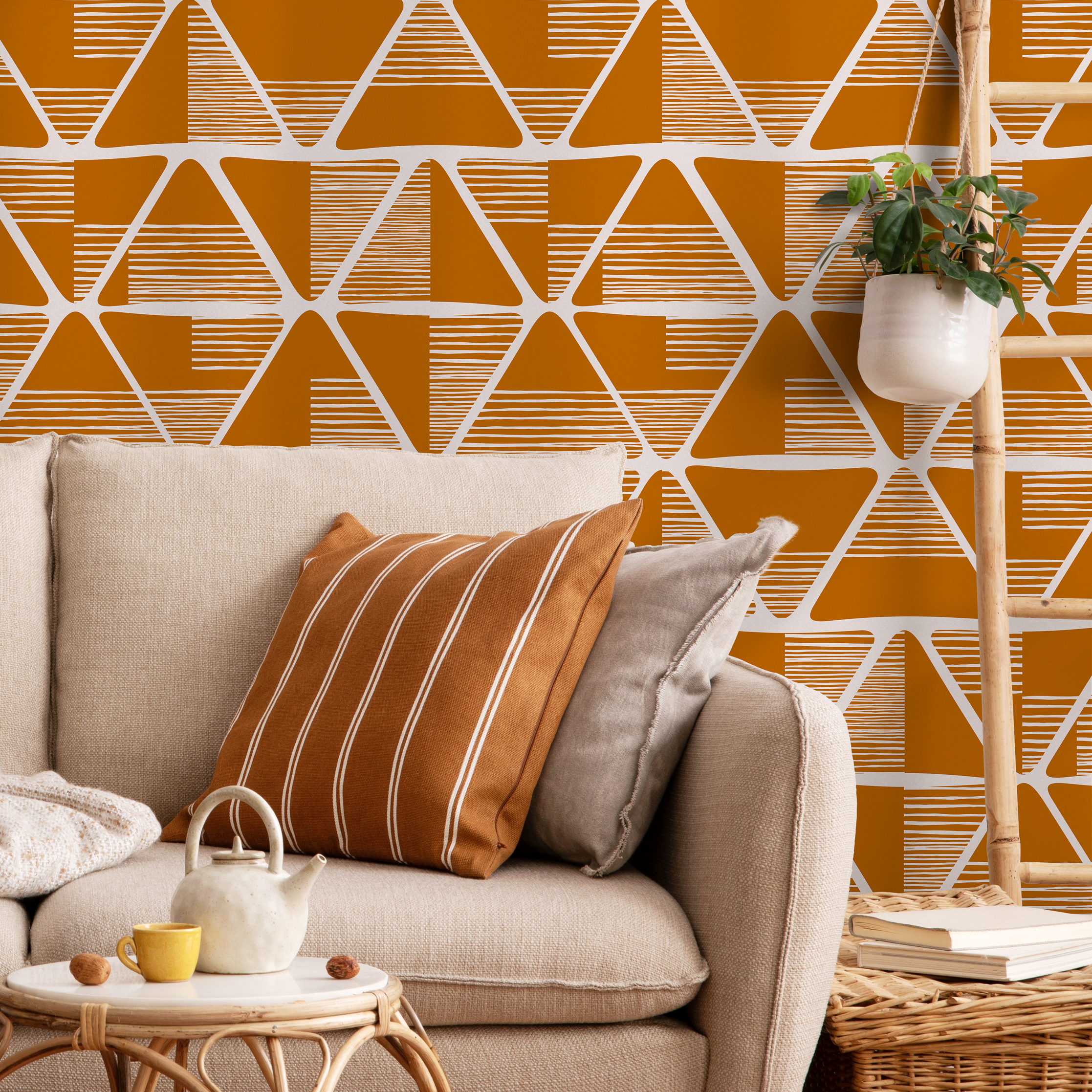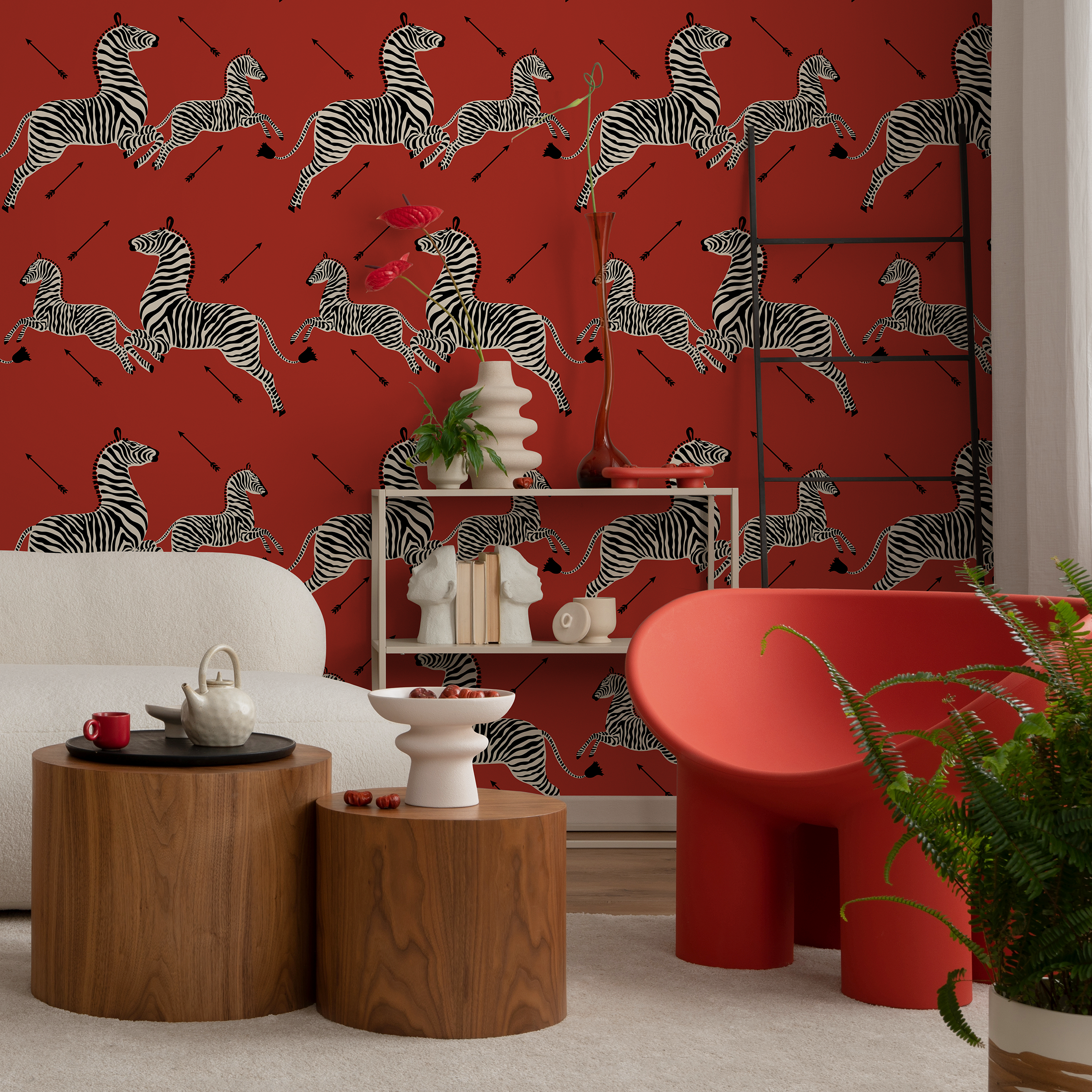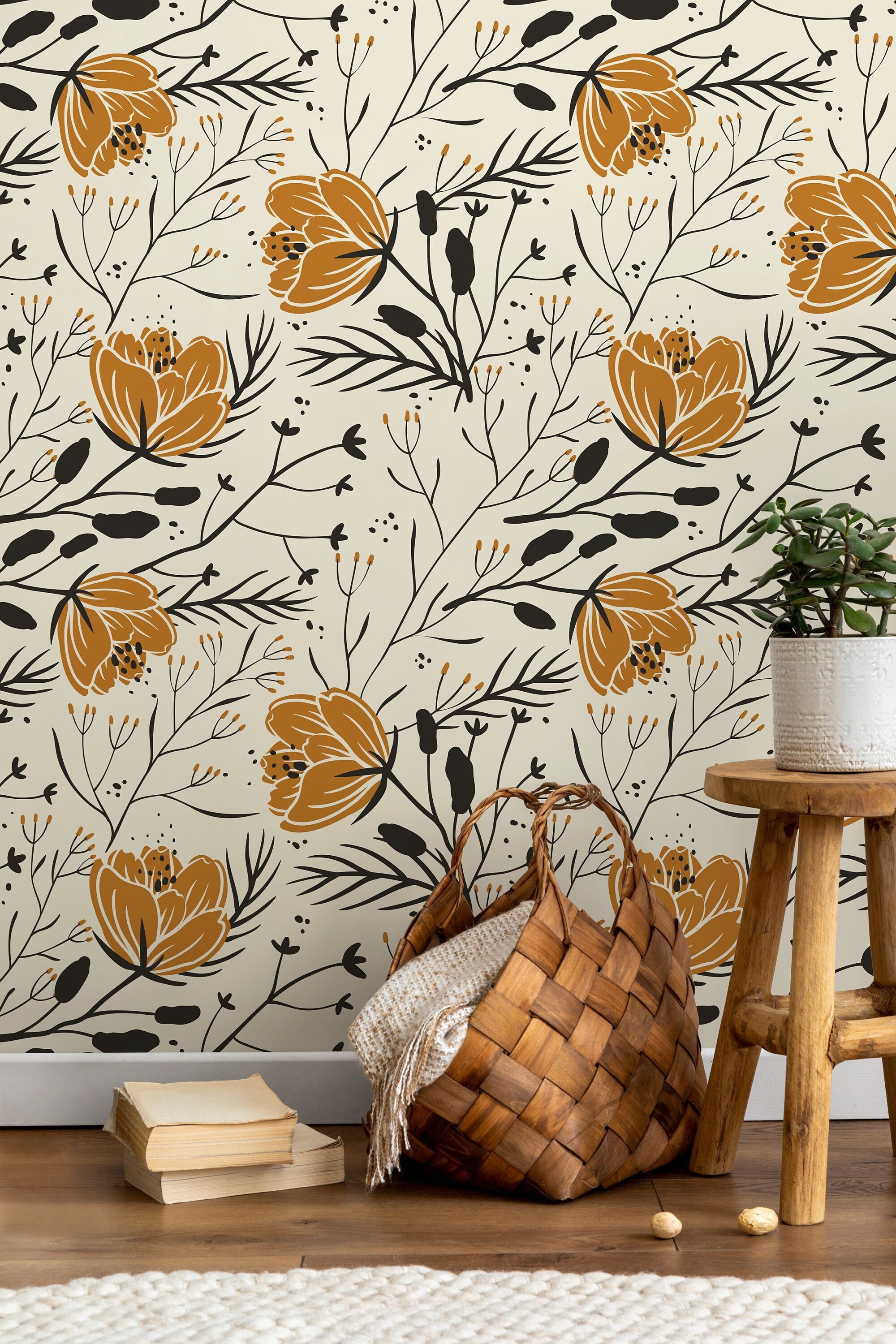Revolutionize Your Walls: Unveiling the Battle of Peel and Stick vs. Traditional Wallpaper
Introduction: The Wallpaper Revolution
Welcome to the new age of interior décor where the wallpaper revolution is in full swing! Gone are the days of monotonous paint jobs and dull wall treatments. Today, we're exploring the vibrant world of wallpapers that blend style, utility, and innovation. Specifically, we're delving into the clash of the titans: peel and stick vs. traditional wallpaper.
For busy homeowners like you, who are always on the lookout for convenient, stylish, and sustainable ways to enhance their living spaces, understanding the differences between these two types of wallpapers is essential. Peel and stick wallpapers, with their promise of easy application and removal, have been gaining popularity. However, traditional wallpapers, with their superior durability and comprehensive design options, continue to hold their ground.
In this article, we'll dissect each type of wallpaper, their application processes, pros and cons, longevity, cost, and more. By the end of this guide, you'll be equipped with the knowledge to make the best choice for your home. Let's pull back the curtain on the battle of peel and stick vs. traditional wallpaper and help you revolutionize your walls with style and ease.
Understanding Wallpaper: Traditional vs. Peel and Stick
As we dive into the realm of wallpaper, it's critical to grasp the fundamental differences between the two most common types: traditional and peel and stick wallpaper. Each offers unique benefits and drawbacks, affecting factors such as application, longevity, and versatility.
What is Traditional Wallpaper?
Traditional wallpaper, or classic wallpaper, is a time-honored interior design staple. This type of wall covering does not come with a self-adhesive backing and is usually made from non-woven materials, a blend of natural and synthetic fibers. This combination allows the wallpaper to breathe, reducing the risk of mold.
To apply traditional wallpaper, you'll need an adhesive paste, which you apply directly to the wall or the wallpaper's backing. Once you've applied the paste and placed the wallpaper on the wall, a flat squeegee is used to eliminate any air pockets or bubbles. One key trait to remember about traditional wallpaper is that it's not designed for easy removal. While newer versions are easier to remove than their ancestors, they can't be reapplied once removed.
What is Peel and Stick Wallpaper?
On the other side of the battlefield, we have peel and stick wallpaper, also known as removable or self-adhesive wallpaper. This type of wallpaper comes with an adhesive backing and is applied much like a window decal. It's a hit among renters due to its easy application and removal process.
To apply peel and stick wallpaper, you simply remove the paper backing to reveal the adhesive, place it on the wall, and smooth out any air bubbles with a squeegee. It's a versatile decorating solution that can be used on a variety of smooth surfaces, not just walls. When you're ready for a change or moving out, the removal process is as straightforward as lifting a corner and pulling it off. The residue left behind, if any, can be easily cleaned off with a damp rag.
Whether you're a homeowner looking for a long-term beautification solution or a renter wanting to add a personal touch to your temporary home, understanding the basic attributes of traditional and peel and stick wallpaper is the first step in making an informed decision. In the upcoming sections, we'll delve deeper into their individual application processes, pros and cons, and more. Stay tuned as we unravel the complexities of traditional vs. peel and stick wallpaper.
The Application Process: Traditional Wallpaper vs. Peel and Stick
Transforming the look of your home with wallpaper involves more than just a keen eye for aesthetics. It's also about understanding the application process behind each type of wallpaper. Let's take a closer look at the application processes for both traditional and peel and stick wallpaper.
Applying Traditional Wallpaper: A Detailed Guide
Traditional wallpaper, also known as non-woven wallpaper, requires an adhesive for application. This type of wallpaper has been a classic choice for generations, offering a long-lasting, durable finish.
To begin, the adhesive is applied directly to the wall or the wallpaper's backing. Once the paste is on, the wallpaper is carefully positioned onto the wall. A flat squeegee is then used to smooth out the wallpaper and remove any air bubbles that may have formed during application. The adhesive takes some time to dry fully, offering the opportunity to adjust the wallpaper even after it's been applied to the wall.
Despite its considerable advantages, traditional wallpaper requires a bit more skill and time to apply than its peel and stick counterpart. But don't be discouraged! With a little patience and precision, the result is a wall finish that exudes a timeless, high-end appeal.
Applying Peel and Stick Wallpaper: A Step-by-Step Process
Peel and stick wallpaper, also known as self-adhesive wallpaper, is a popular choice for those looking for a quicker, less messy wallpapering experience. As the name suggests, this type of wallpaper already has an adhesive backing, making it a breeze to install.
The process starts by peeling off the backing to reveal the adhesive. The wallpaper is then applied directly to the wall, just like a window decal. Once the paper is on the wall, a squeegee is used to eliminate any air bubbles, ensuring a smooth finish.
Peel and stick wallpaper works best on completely smooth surfaces. It's worth noting that once the wallpaper is on the wall, there's limited leeway to reposition it, unlike with traditional wallpaper. However, the quick, clean, and straightforward application process makes peel and stick wallpaper a top choice for DIY enthusiasts and renters alike.
In the battle of traditional vs. peel and stick wallpaper, understanding the application process can help you choose the right wallpaper for your needs. Whether you opt for the classic appeal of traditional wallpaper or the convenience of peel and stick, rest assured that both types will provide a stunning transformation for your walls. The next section will dive deeper into the pros and cons of each wallpaper type to further assist you in making an informed decision.
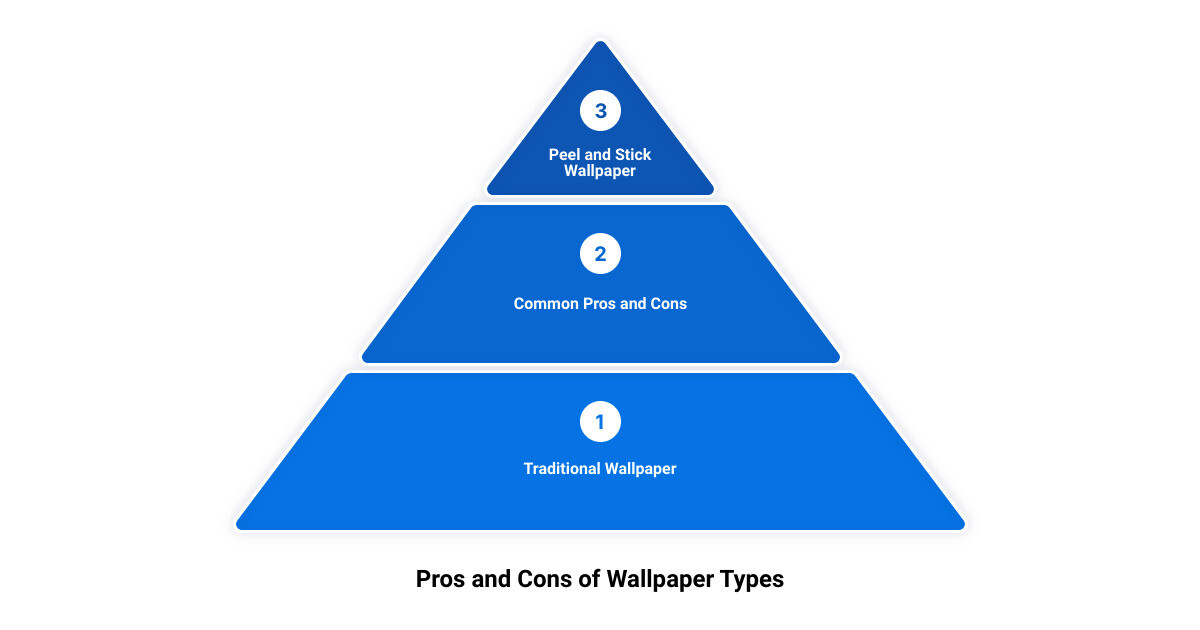
Pros and Cons: Weighing the Benefits and Drawbacks of Each Type
To make the right decision when it comes to wallpapering your home, you must understand the benefits and drawbacks of each option. Let's explore the advantages and disadvantages of traditional and peel-and-stick wallpaper.
The Advantages of Traditional Wallpaper
Traditional wallpaper has been a staple in interior design for many years, and for good reason. The first advantage of traditional wallpaper is its variety of designs. With hundreds of colors, patterns, and textures, traditional wallpaper is the gold standard in terms of options available[^1^].
Traditional wallpaper also stands out for its lifespan and durability. With proper installation, you can expect traditional wallpaper to last up to 15 years with minimal maintenance[^1^]. Plus, because of its application method, traditional wallpaper tends to adhere better to walls, minimizing the risk of peeling over time[^1^].
The Disadvantages of Traditional Wallpaper
While traditional wallpaper has its perks, it's not without its downsides. The first is its complex installation process. Traditional wallpaper requires the use of paste and tools, and you might need professional help to install it[^1^]. This can add to the overall cost and time required to complete the project.
The process of removal can also be cumbersome and time-consuming[^1^]. This makes traditional wallpaper a less attractive option for those who like to switch up their décor frequently or for renters who need to return the walls to their original state when moving out.
The Benefits of Peel and Stick Wallpaper
Peel-and-stick wallpaper has grown in popularity due to its simplicity and flexibility. Its main advantage is the ease of installation and removal[^1^]. As a self-adhesive wallpaper, there’s no need for paste or extra tools during installation[^1^]. Plus, it's a great option for DIYers and renters, as it can be easily removed without leaving a sticky residue behind[^1^].
Another benefit is its cost-effectiveness. Typically, peel-and-stick wallpaper is less expensive than traditional wallpaper[^1^]. This makes it an ideal choice for those working with a tight budget or those who enjoy frequently changing their home décor.
The Downfalls of Peel and Stick Wallpaper
Although peel-and-stick wallpaper offers several advantages, it's not without its faults. The primary disadvantage is its shorter lifespan. Peel-and-stick wallpaper is expected to last up to three years before it begins to peel or tear away from the walls[^2^].
Also, peel-and-stick wallpaper sometimes doesn't adhere well to walls, which can lead to air pockets and bubbles[^2^]. This can detract from the overall aesthetics and might require frequent touch-ups.
In conclusion, both traditional and peel-and-stick wallpapers have their strengths and weaknesses. Your choice will largely depend on your specific needs, preferences, and circumstances.
[^1^]: Benefits of wallpaper versus painting - ONDECOR.COM [^2^]: PEOPLE ALSO ASK

Longevity and Durability: How Long Does Each Type Last?
In the thrilling battle of wallpapers, longevity and durability are key factors that tilt the scales. So, let's delve into how long each type of wallpaper lasts, starting with traditional wallpaper.
The Lifespan of Traditional Wallpaper
Traditional wallpaper is a resilient force to reckon with. The durability of this wallpaper type has made it a popular choice for many homeowners over the years. Traditional wallpaper is designed to withstand the test of time and can last for many years without showing signs of wear and tear. In fact, it has a shelf life of up to 15 years with very little maintenance[^1^].
Modern wallpapers are also designed to withstand moisture, making them a great choice for high-traffic areas like bathrooms and kitchens. This feature significantly extends the lifespan of traditional wallpaper and ensures it remains intact and vibrant for a substantial duration[^1^].
The Lifespan of Peel and Stick Wallpaper
The story is slightly different when it comes to peel and stick wallpaper. While it's hailed for its ease of installation and removal, its lifespan tends to be shorter. Peel and stick wallpaper can last anywhere from three to five years before it begins to peel or tear away from the walls[^2^].
However, if applied correctly, peel-and-stick wallpaper can stand the test of time, lasting five years or longer[^2^]. This means that the longevity of peel-and-stick wallpaper greatly depends on the application techniques used. Incorrect application or frequent removal and reapplication can significantly reduce its lifespan[^2^].
In conclusion, while traditional wallpaper offers a more long-term commitment, peel-and-stick wallpaper is a fantastic short-term solution. The choice between the two will depend on your individual needs and how long you plan to keep the wallpaper in place.
[^1^]: Benefits of wallpaper versus painting - ONDECOR.COM [^2^]: PEOPLE ALSO ASK
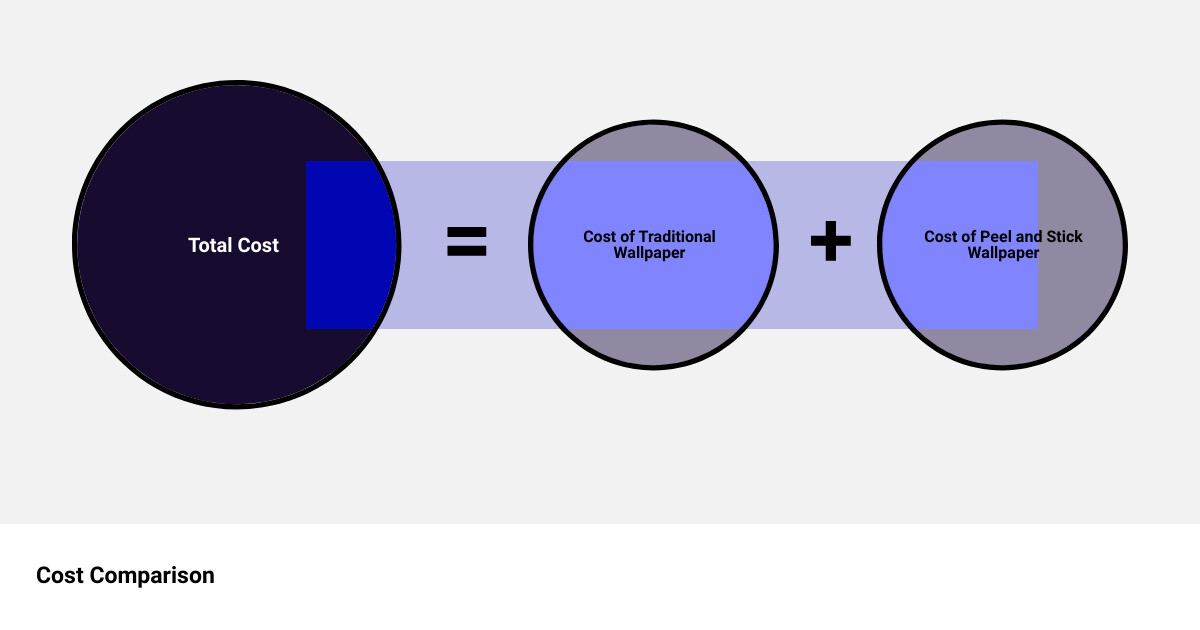
Cost Comparison: Is Peel and Stick Wallpaper Cheaper than Traditional Wallpaper?
Think of your budget as the ultimate decider in the battle of peel and stick versus traditional wallpaper. You might assume that the simpler option would be more affordable, but is that really the case?
Peel and stick wallpaper is often seen as the more budget-friendly option. It's true, peel and stick wallpaper is typically much less expensive than traditional wallpaper. As per our sources, the cost difference is often because the rolls are smaller, but the lower price is a benefit regardless of the reason. This affordable price, coupled with the fact that you can easily install it yourself, makes it an attractive choice for those who are budget-conscious or for those who love to change their decor frequently.
On the other hand, traditional wallpaper can start as low as $10 a roll and quickly escalate into the hundreds, depending on the style and design you choose. However, it's essential to remember that when you opt for traditional wallpaper, you might also need to factor in the costs of professional installation, especially if you're not a seasoned DIYer. Furthermore, if the space you're working with already has old wallpaper, you might need to consider the cost of removal, which can range from $500 to $700 per room.
The above costs don't even take into account the possible need for touch-ups or replacements over the years. Traditional wallpaper, while more durable, is also prone to wear and tear, especially in high-traffic areas. This means that over time, the cost of maintaining traditional wallpaper could add up.
So, is peel and stick wallpaper cheaper than traditional wallpaper? Yes, initially, it is. But remember, the choice between peel and stick and traditional wallpaper isn't just about the upfront costs. It's also about longevity, ease of application, and how often you're likely to want to change your decor. If you're someone who likes to update their interiors regularly or are in a temporary living situation (like renting), the lower cost and convenience of peel and stick wallpaper might be an ideal choice. However, if you're looking for something more durable and permanent, traditional wallpaper, despite its higher cost, might be the better option for you.
Ultimately, the best choice for you depends on your personal preferences, your budget, and your long-term plans for your space. Regardless of what you choose, both types of wallpapers can add a unique touch of style and character to your home.
Making the Right Choice: Factors to Consider When Choosing Between Traditional and Peel and Stick Wallpaper
Embarking on a home renovation project involves a plethora of decisions, and when it comes to wallpapers, the choice between traditional and peel and stick variants can be a tough one. To help you make an informed choice, let's break down some key factors you should consider: home ownership, skill level, and duration of use.
Home Ownership: Renting vs. Owning
For homeowners who have the liberty to make permanent changes to their living spaces, traditional wallpaper can be a great choice. It's durable, offers a wide variety of designs, and can add a sophisticated touch to your interiors. However, if you're a renter, peel-and-stick wallpaper is a more feasible option. Its easy removal process and minimal residue make it an ideal choice for temporary living situations. Plus, it allows you to personalize your space without violating your rental agreement.
Skill Level: DIY vs. Professional Installation
Your skill level is another crucial factor in the peel-and-stick vs traditional wallpaper debate. Peel-and-stick wallpaper is designed for the DIYer. It doesn't require any paste or special tools for installation – just peel and stick! On the other hand, traditional wallpaper needs more patience and skill, and you might need to hire a professional to ensure a flawless finish. It involves applying adhesive, positioning the wallpaper correctly, and smoothing out any air bubbles. If you enjoy DIY projects and are confident in your abilities, you might enjoy the process. If not, the convenience and speed of installing peel-and-stick wallpaper might be more appealing.
Duration of Use: Temporary vs. Long-Term Commitment
Are you planning a quick style update, or are you aiming for a decor that stays fresh for years? If you love switching up your interiors regularly, peel-and-stick wallpaper is your best friend. It's easy to remove and replace, allowing you to update your style as often as you like. However, if you're searching for a long-lasting solution, traditional wallpaper wins the race. With a lifespan of up to 15 years, it's a more permanent design solution that can withstand the test of time.
When choosing between peel-and-stick and traditional wallpaper, it's essential to consider these factors. Remember that the right choice for you depends on your personal situation and tastes. At ONDECOR, we offer a wide variety of both traditional and peel-and-stick wallpapers, ensuring you find the perfect design regardless of your choice.
ONDECOR: Your Go-To Source for High-Quality, Eco-Friendly Wallpapers
In the world of interior design, ONDECOR has established itself as a trusted source of high-quality, eco-friendly wallpapers. Our commitment to the environment is evident in our product selection, offering non-toxic options that are not only safe for your home but also considerate of our planet. But our commitment doesn't stop there. All of our wallpapers are proudly made in the USA, ensuring each product adheres to strict manufacturing standards while supporting local businesses and contributing to a sustainable economy.
Whether you're leaning towards the traditional wallpaper or the innovative peel and stick option, we've got you covered. Our extensive range of designs is sure to cater to everyone's taste. From classic florals to modern geometric patterns, there's something for everyone. For those who seek the charm of traditional wallpaper, we offer designs like the Coniferous Floral Unpasted Wallpaper or the Estate Damask Unpasted Wallpaper. On the other hand, lovers of easy application and removal will find the Painted Dash or Decorative Tile Peel and Stick Wallpapers more to their liking.
Our user-friendly website allows you to shop by category, making your hunt for the perfect wallpaper a breeze. Whether you're after a specific style or pattern, or just seeking some inspiration, browsing our collections is an enjoyable experience. And with our samples and orders shipping free across the USA, you can start your home project without delay.
We understand that the process of choosing and applying wallpaper can be daunting, especially for first-time decorators. That's why our friendly and experienced customer service team is always ready to assist you. Whether you have inquiries about our wallpapers or need guidance during the application process, we're here to ensure a seamless shopping experience from start to finish.
In conclusion, whether you're a homeowner looking to revamp your living space or a renter seeking to add a personal touch to your temporary home, ONDECOR is your go-to source for high-quality, eco-friendly wallpapers that will transform your walls into a work of art. So why wait? Start exploring our collections today and bring your interior design dreams to life.
Conclusion: The Final Verdict on Peel and Stick vs. Traditional Wallpaper
The wallpaper war has been waged, and it's time to declare the victor in the battle of peel and stick versus traditional wallpaper. However, it's not as simple as crowning one as the absolute winner. Each has its strengths and weaknesses, and your choice will largely depend on your specific needs, preferences, and situation.
Traditional wallpaper continues to be the gold standard for longevity, durability, and a rich array of design options. It's a great choice if you own your home and want a long-lasting design solution that stands the test of time. However, it's important to remember that the application and removal processes are more complex and time-consuming, often requiring professional assistance.
On the other hand, peel and stick wallpaper shines in its ease of application and removal. Its self-adhesive nature makes it a DIY-friendly option that's perfect for renters, temporary design solutions, or those who enjoy frequently changing their decor. It's also generally cheaper and easier to maintain. However, keep in mind that its lifespan may not be as long as its traditional counterpart, and the application process leaves little room for error.
In the final analysis, the choice between traditional and peel and stick wallpaper isn't a matter of superiority. It's about choosing the right tool for the job. If you value longevity and a wider range of design options, traditional wallpaper is your best bet. If ease of application, removal, and cost-effectiveness are your top priorities, peel and stick wallpaper is a compelling choice.
No matter which type of wallpaper you choose, ONDECOR LLC has got you covered. With a vast array of designs and a commitment to quality and sustainability, we're here to help you transform your living space into a haven of style and comfort.
In the end, the real winner of the peel and stick vs. traditional wallpaper debate is you, the customer. You now have more options than ever to personalize and enhance your living spaces, making your home truly your own. So, explore your options, consider your needs, and make the choice that best suits your lifestyle and design aspirations.
Share

